We recently celebrated the arrival of the Kia EV6 as a truly watershed moment for Kia in Australia. Like its Hyundai sibling, Kia has come a very long way in a relatively short amount of time and is more than capable of producing world class products in a wide range of segments. No matter which market segment you’re looking at, Kia undoubtedly has a good quality product to offer you – be it small cars, SUVs, something sporty or a regular A to B car. The EV6 has won many awards globally and it has been one of our favourite electric cars since we first tested it. But how does it fare against a competitor from what has been easily the biggest selling EV brand globally? We compared the 2022 Kia EV6 Air against the 2022 Tesla Model Y to find out.
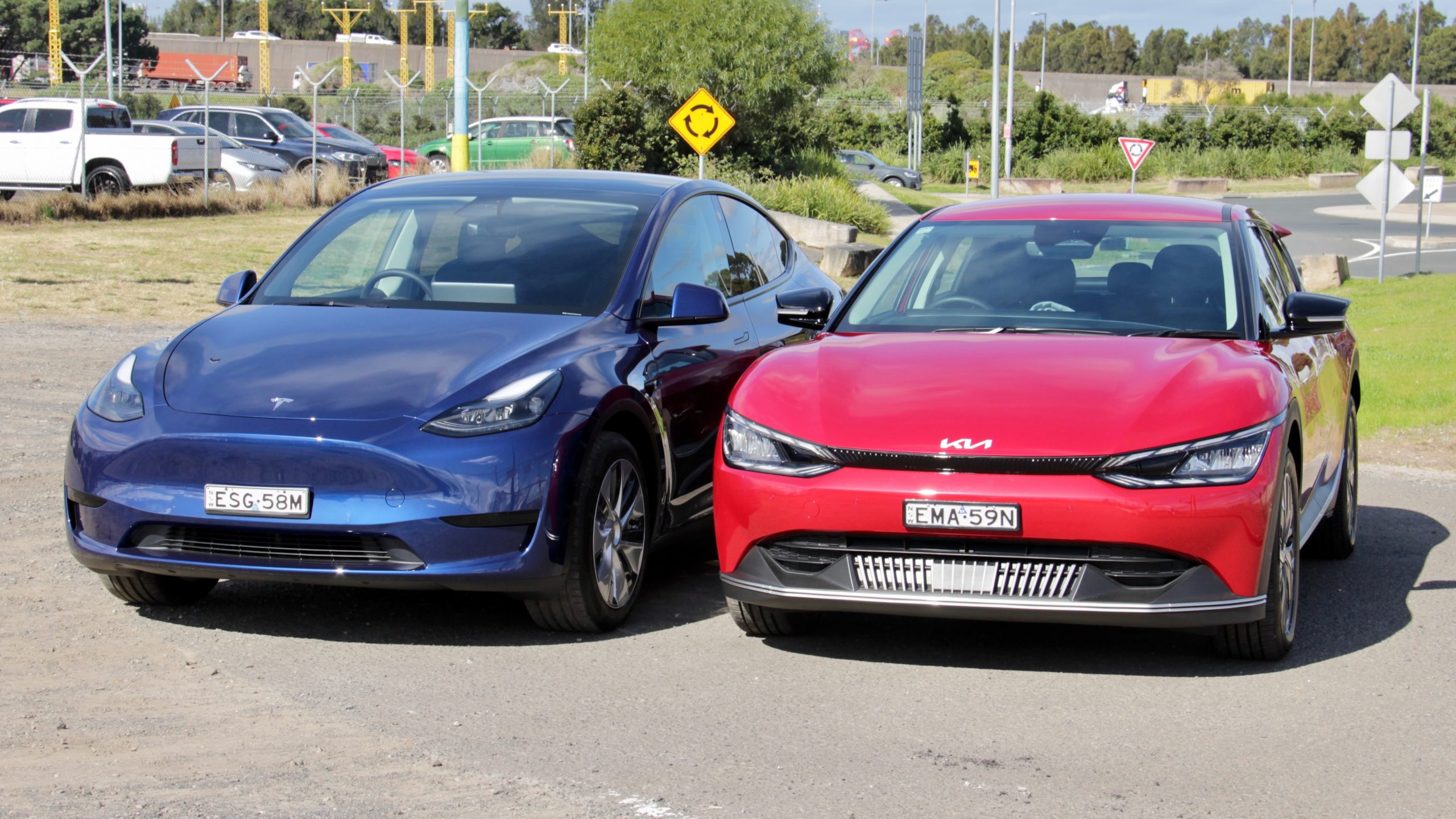
The Model Y is a new model to Australia and it’s much anticipated too, given that it’s been delayed for at least a few years. Essentially an SUV version of the popular Model 3 sedan, the Model Y is on its way to be the best-selling EV globally this year. Tesla has a big order bank for them in Australia and it’s easy to see why. Should buyers be waiting up to nine months for a Model Y or more than a year for an EV6? Or should they buy something else?
Price & Equipment:
Both the entry-level variants of the 2022 Kia EV6 and 2022 Tesla Model Y ranges are similarly priced and both cars also received recent price rises to the tune of around $4,000. The Kia costs $72,590 plus on-road costs (around $79,000 drive away) and the Model Y is priced from $72,300 plus on-road costs (around $78,000 drive away) before any possible state incentives. But despite having a slightly lower drive away price, the Tesla also has a lot more equipment than the EV6 Air.
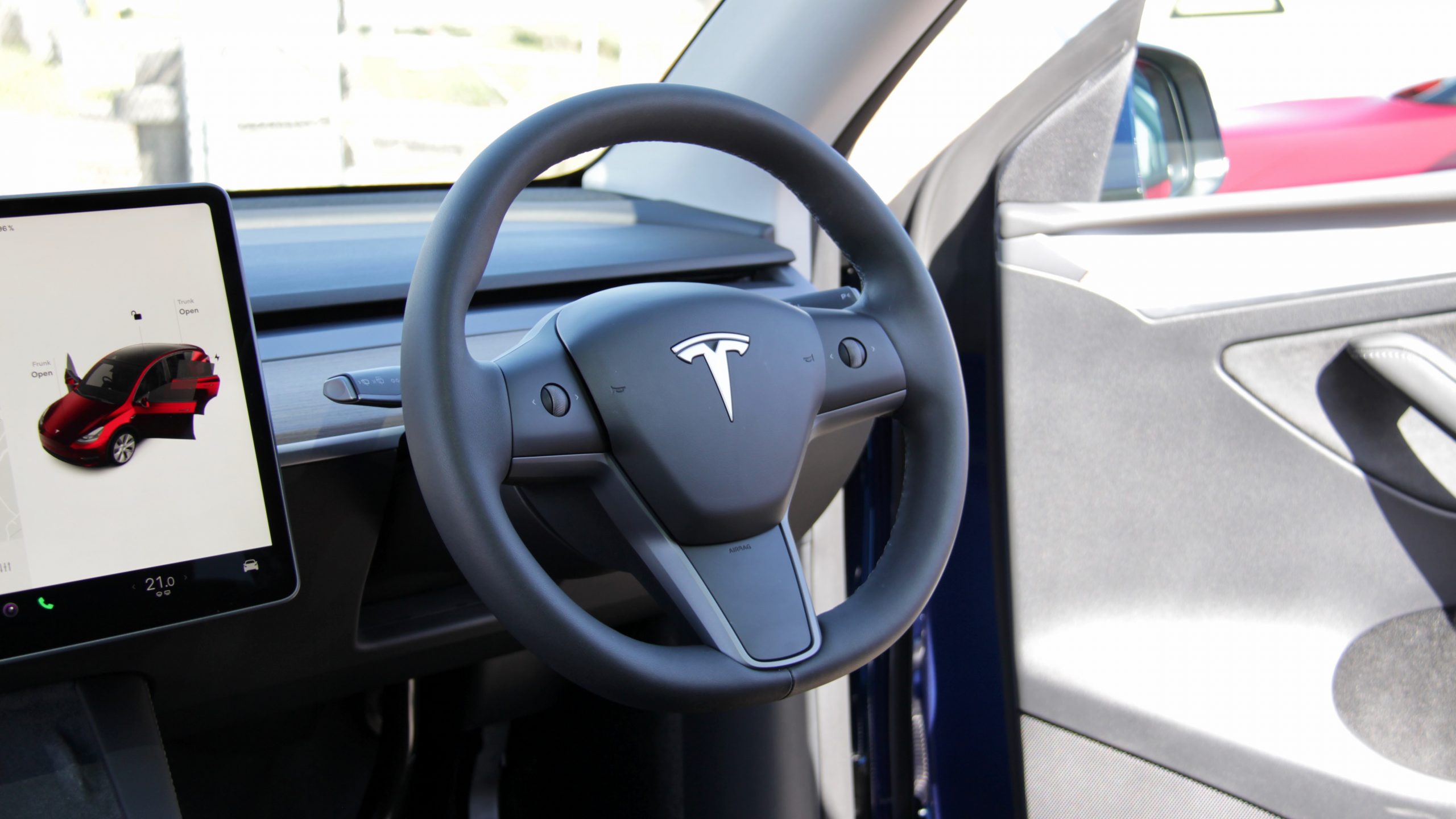
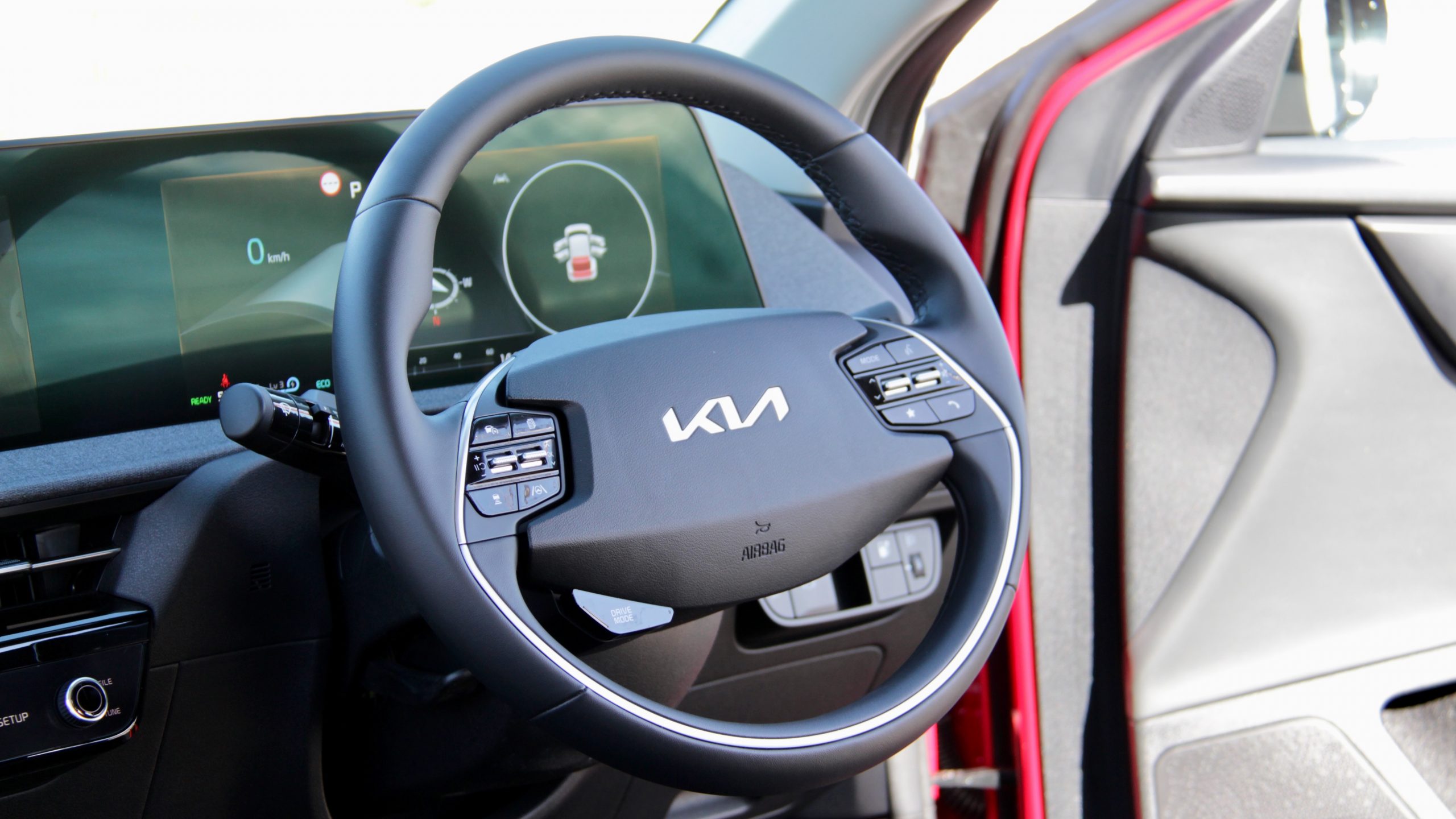
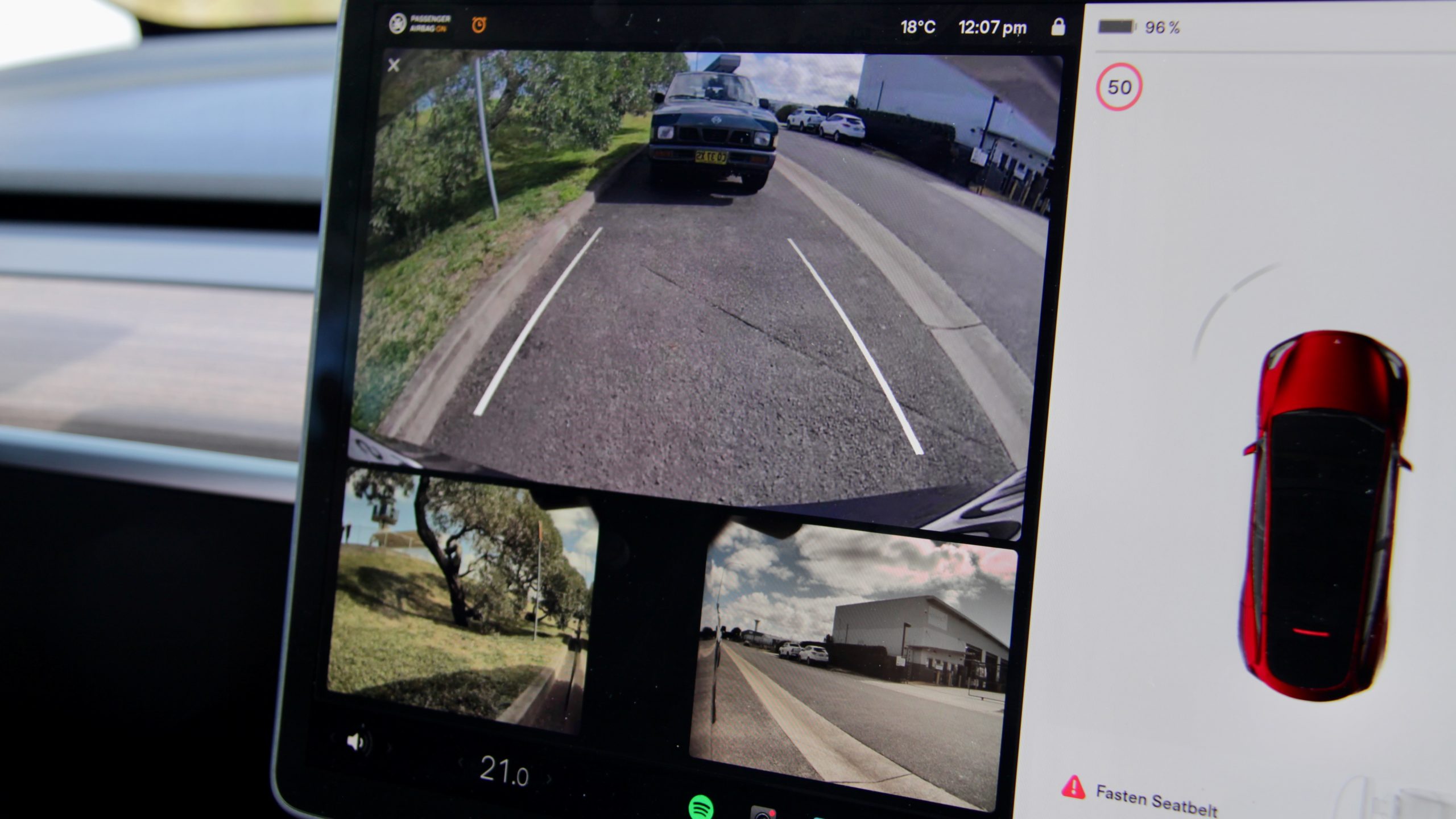
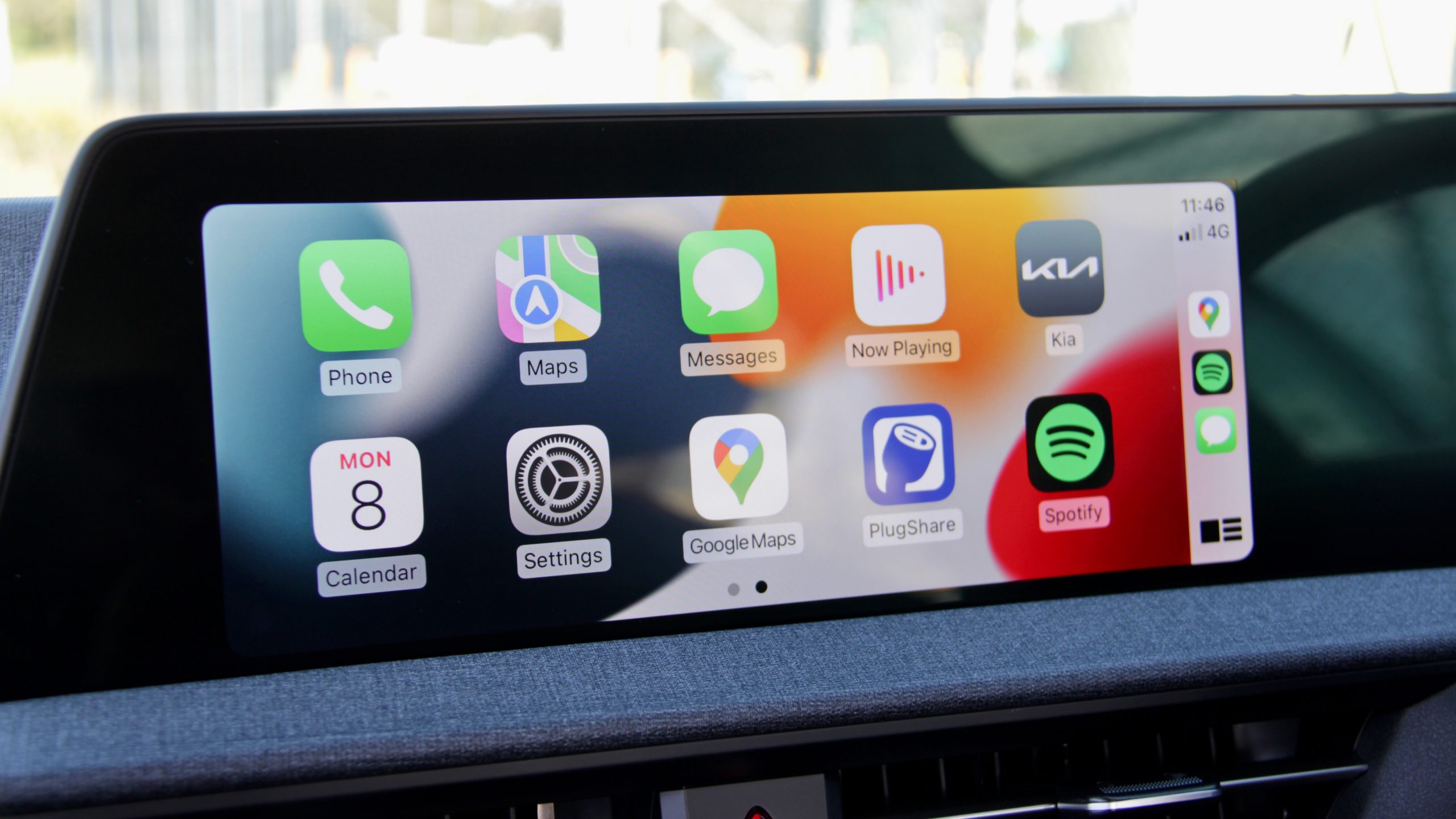
Both cars share equipment such as 19-inch wheels, automatic all-LED lighting, auto wipers, dual-zone climate control, wireless phone charging (though the Tesla has two chargers to the Kia’s one), huge touchscreens (Kia: 10.25-inches, Tesla: 15-inches) with connectivity like satellite navigation and digital radio, faux leather upholstery with electric driver’s lumbar adjustment, rear centre armrests with cup holders, remote rear seat folding, heated and auto-folding mirrors and rear air vents.
Safety kit includes multiple airbags (Kia: seven, including a front centre unit, Tesla: six), auto emergency braking (AEB) with pedestrian monitoring, lane departure warning with lane trace assist, blind-spot monitoring (Kia uses sensors in the Air with lights in the mirrors themselves, while Tesla uses a camera feed that’s projected onto the centre screen), adaptive cruise control with stop and go functionality, tyre pressure monitoring, auto high beam and a reversing camera.
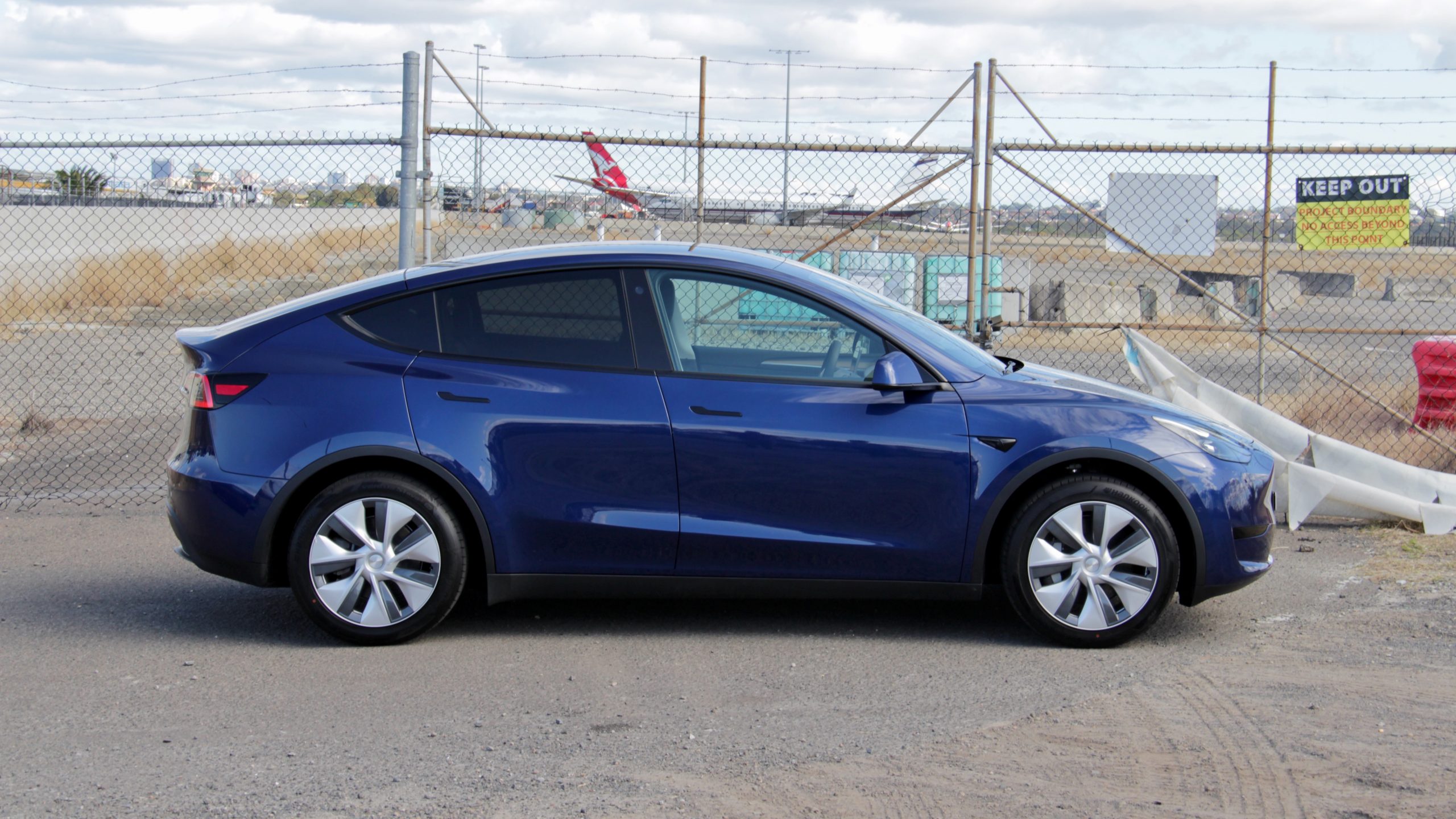
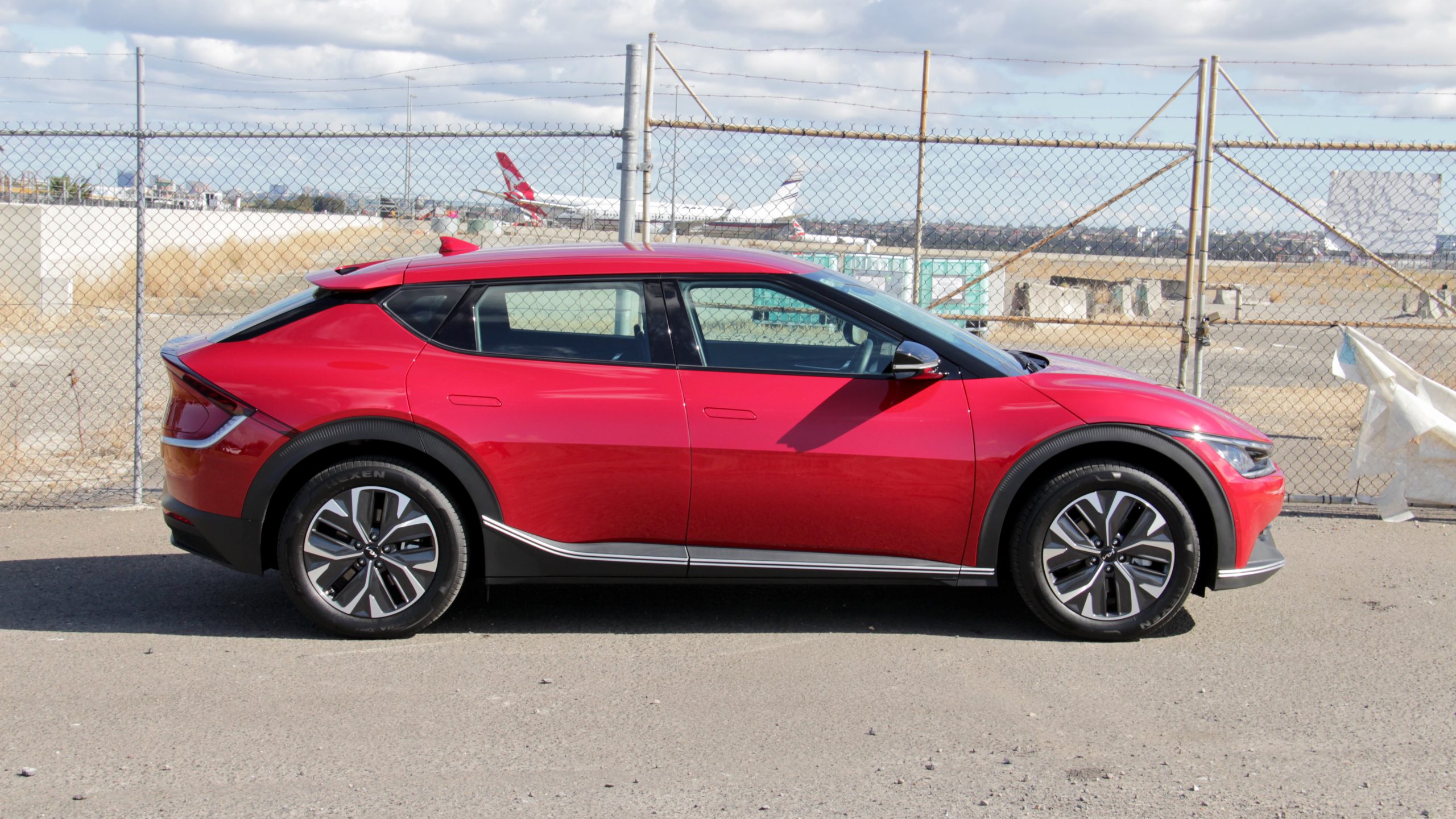
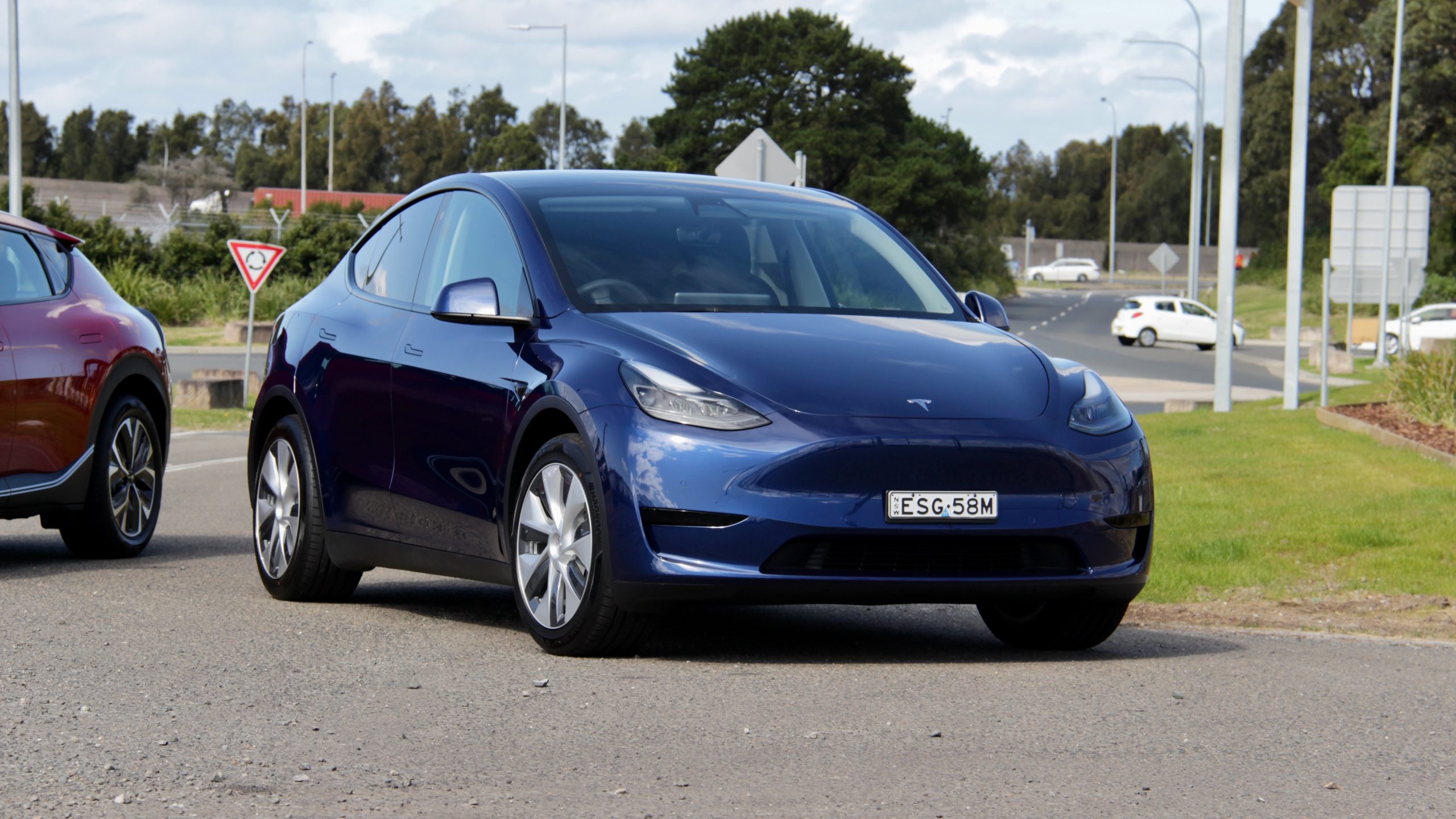
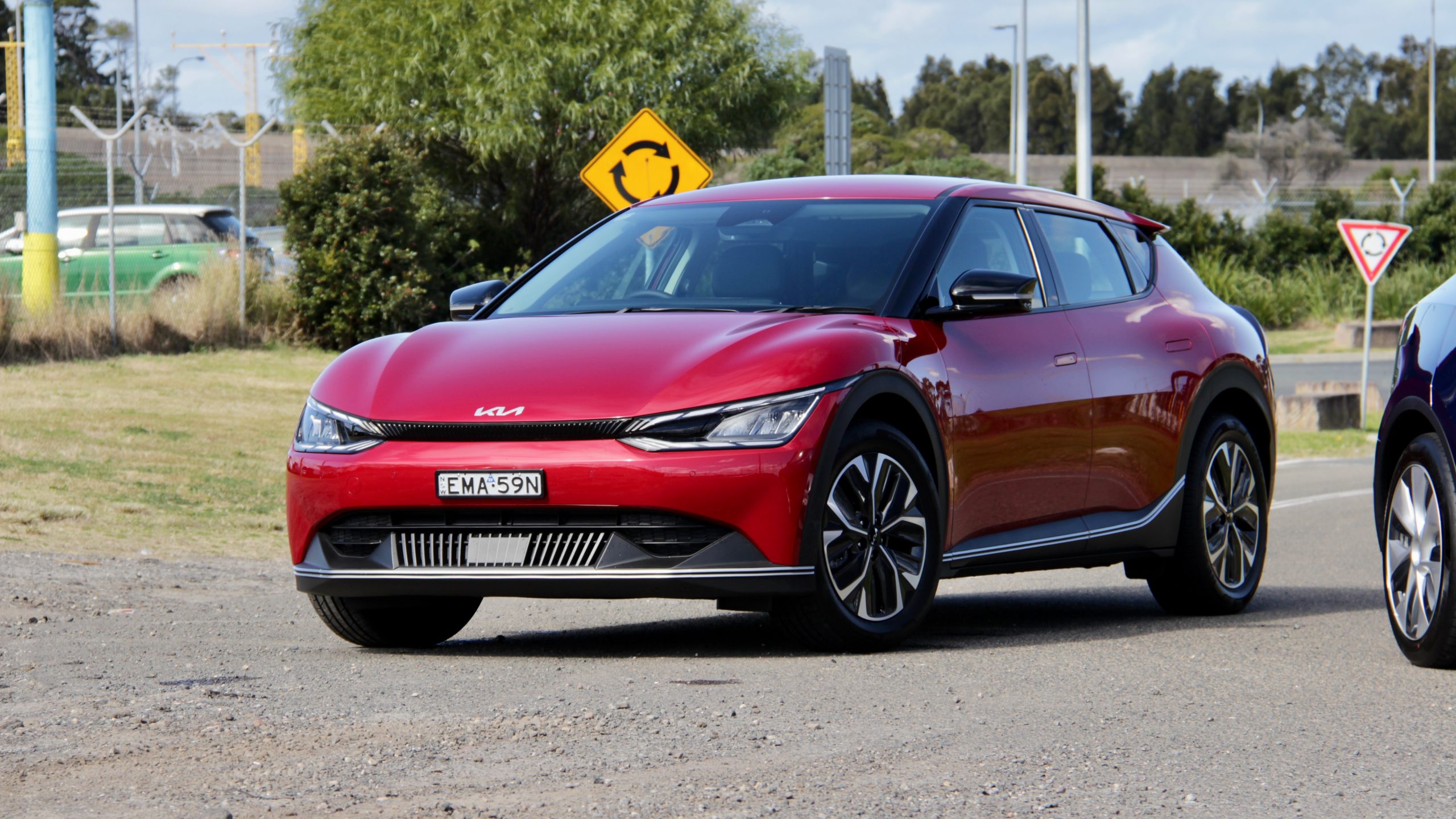
While the Kia has a rear seat household socket, an included portable trickle charger, smartphone mirroring (Apple CarPlay and Android Auto), a digital driver’s display, a cargo cover, safe exit assist, AM radio, driver attention monitoring and rear cross-traffic alert, the Tesla has heated front and rear seats, an electric tailgate, panoramic glass roof, a 15-speaker sound system (versus the Kia’s six-speaker unit), a heated steering wheel and sentry mode, which uses the car’s exterior cameras to monitor for people surrounding the car whilst it’s parked. Plus, the Tesla’s infotainment system offers a number of unique features, including games and internet connectivity for when you’re trying to pass the time while charging and even an inbuilt dashcam. Finally, Tesla also has a smartphone app, which enables you to operate its locks, remote heating/cooling, etc from your phone.
The Kia is available in six colours: ‘Yacht Blue’, ‘Snow White Pearl’, ‘Glacier White’, ‘Steel Grey’, ‘Aurora Black’ are $520 extra – our test car’s ‘Runway Red’ is the only no-cost extra. The Tesla is available in ‘Black’, ‘Deep Blue’ and ‘Midnight Silver’ for $1,500, ‘Red’ for $2,900 and ‘Pearl White’ for no extra cost. Both cars come with black interiors but the Tesla is also available with white faux leather for $1,500 extra, as well as 20-inch wheels ($2,900) and either ‘Enhanced Autopilot’ ($5,100 – navigate on autopilot, auto lane change, auto park, summon and smart summon functionality) or ‘Full Self-Driving Capability’ ($10,100 – enhanced autopilot and traffic light and stop sign control).
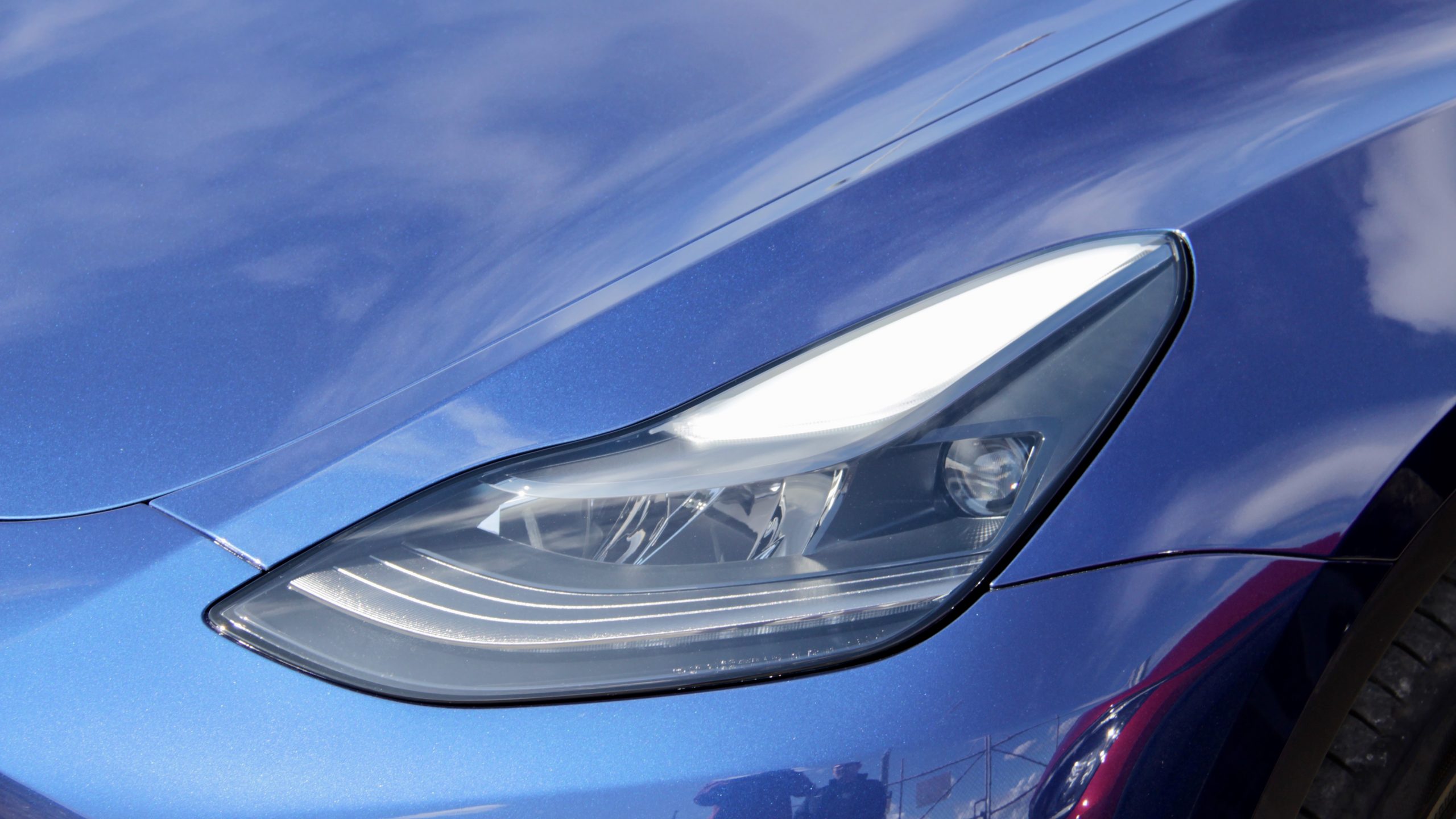
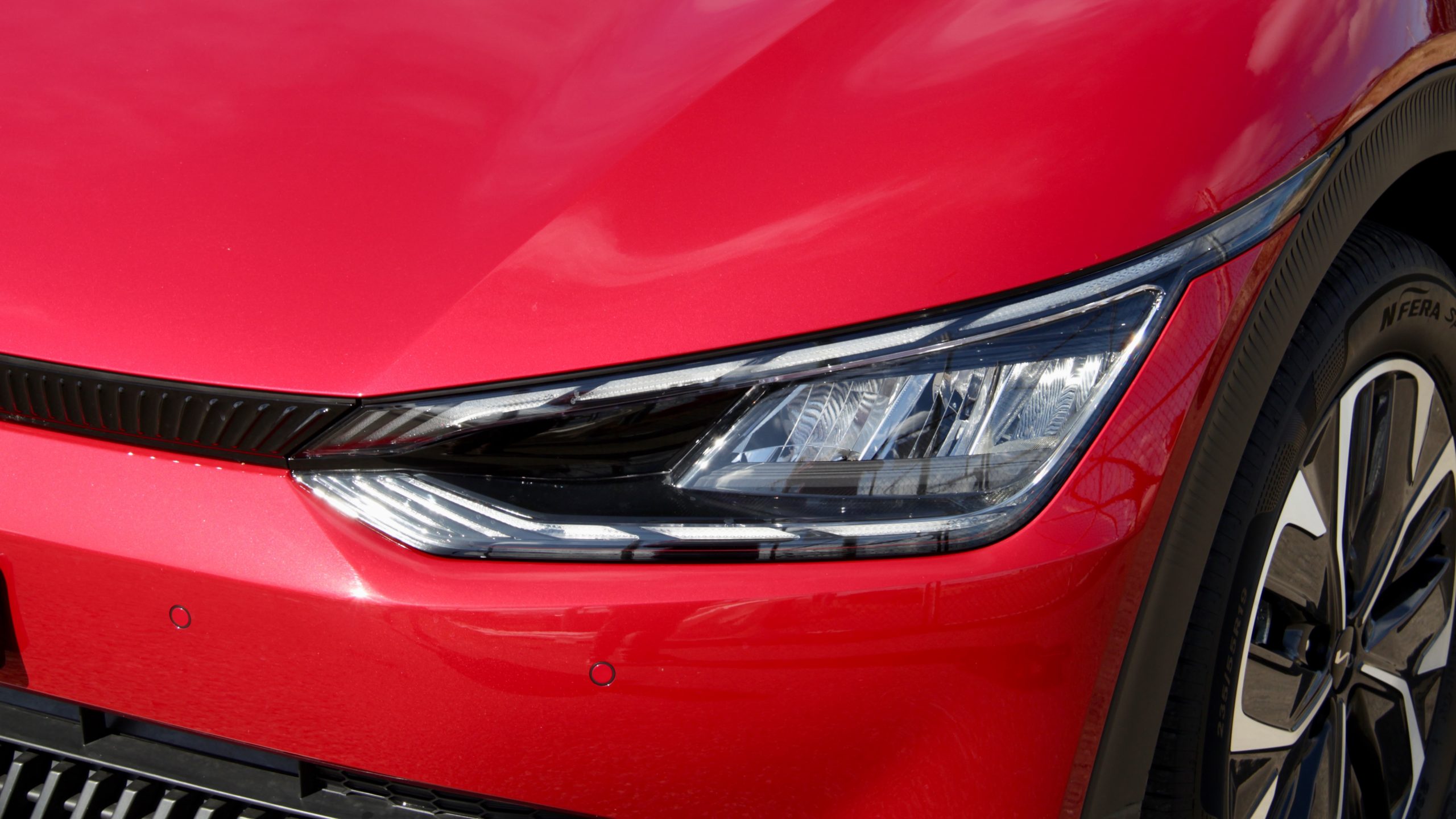
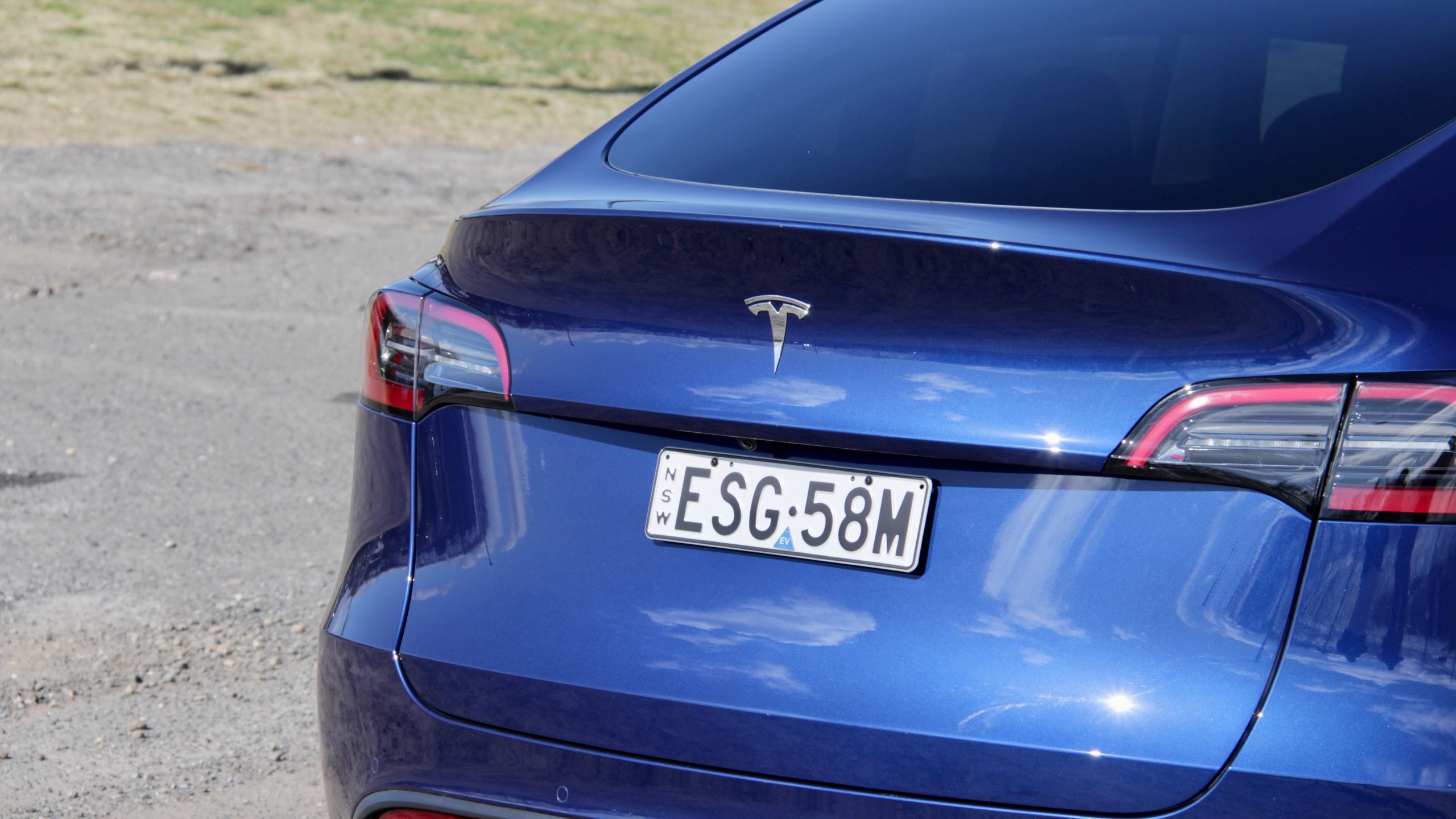
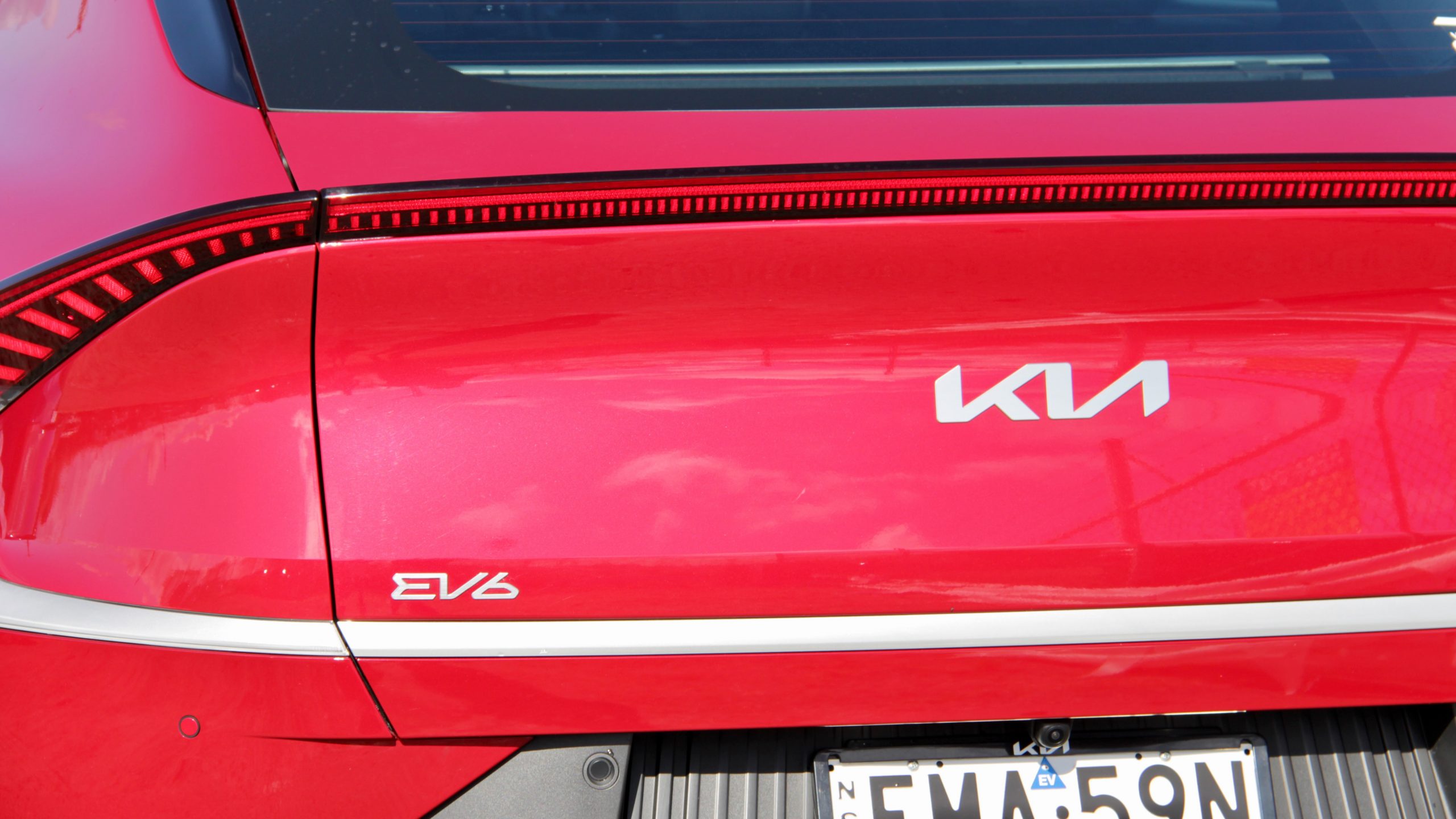
It’s the Tesla’s extra standard equipment that we think makes the EV6 look like – unusually for Kia – poor value for money. If you want to add more to your EV6, you have to step up to the GT-Line, which is knocking on the door of $90,000 (for the same performance and less range due to its extra weight), or even more for the all-wheel drive model. Tesla offers an almost-$100k Model Y too in the form of the Performance spec, but it also has a massive increase in performance.
Price & Equipment Winner: Tesla Model Y
Performance & Range:
Despite hailing from very different manufacturers, the 2022 Kia EV6 Air and 2022 Tesla Model Y RWD are quite similar underneath their bodies. They both use big lithium ion battery packs – the Kia uses a 77.4kWh battery, and Tesla doesn’t disclose its battery specs, but quick research suggests that it’s 62.3kWh – and, in a win for enthusiasts, are both rear-wheel drive. From the outset, the Tesla is definitely the quicker car, but the Kia offers noticeably more range – both on paper and in the real world.
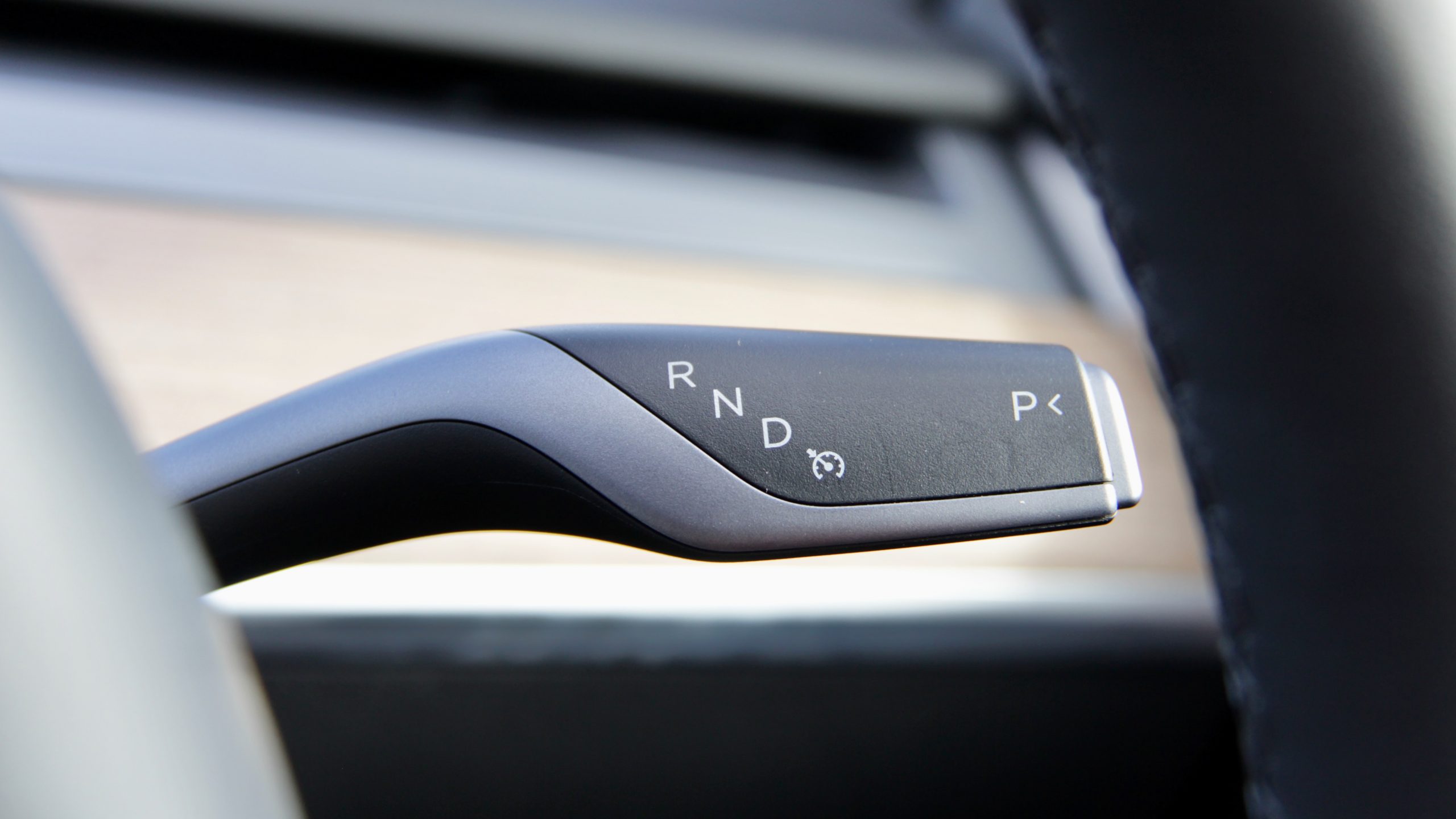
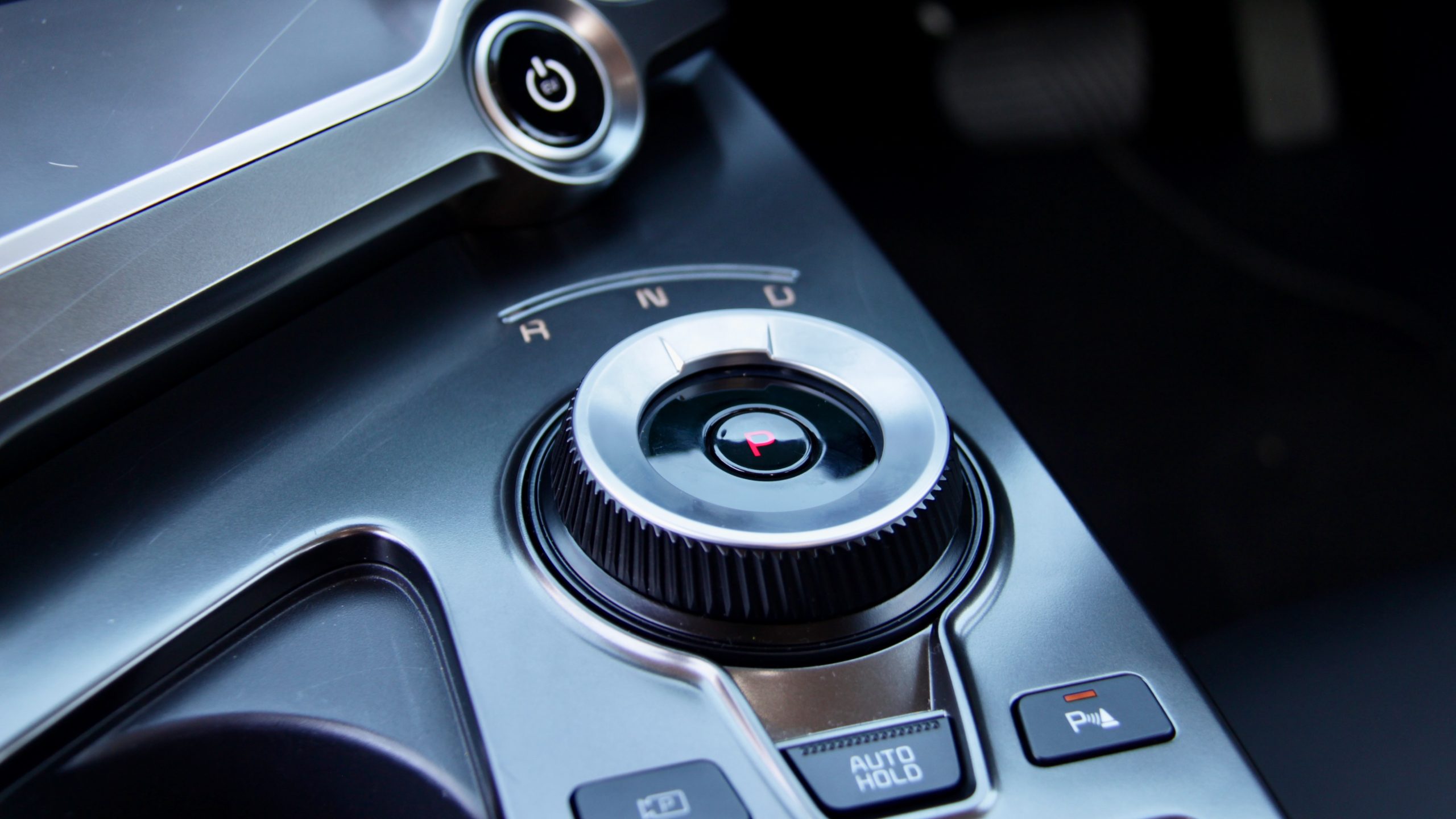
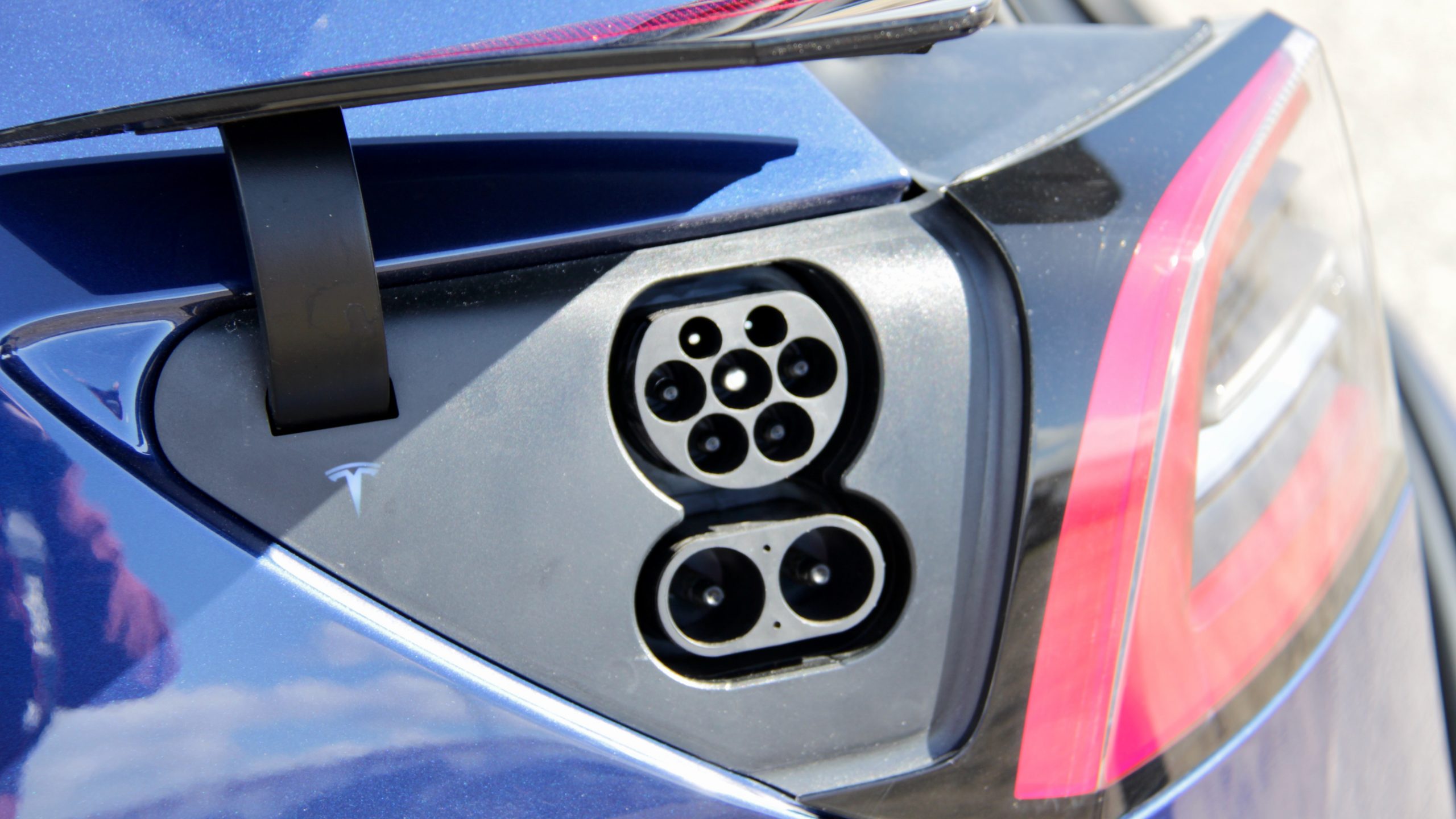
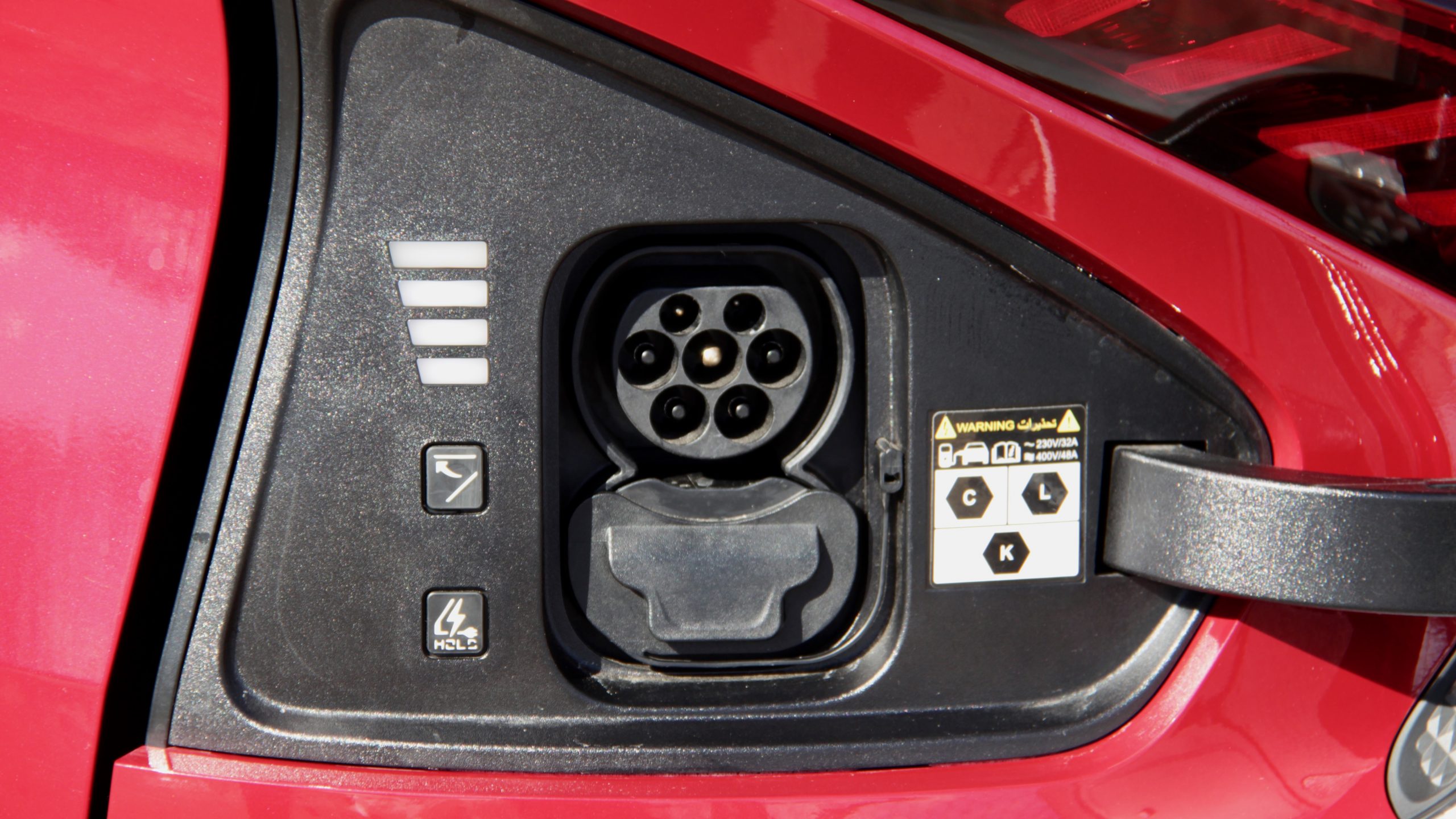
Using the Kia-Hyundai-Genesis’ ‘e-GMP’ platform, the EV6 can be charged using super fast 350kW chargers, which charge its battery from empty to 80 per cent in just 18 minutes. A slower 50kW charger stretches this time out to 73 minutes. The Tesla also offers the same high charging speeds, and the brand’s excellent ‘Supercharger’ charging network is only increasing further every day, potentially giving it a charging advantage over the Kia (and other electric cars). Kia claims that you’ll see a maximum of 528km of range in the EV6 Air, while the entry-level Model Y RWD is capable of 455km (both to the WLTP standard). In the real world, the Tesla is definitely the more efficient EV, but its smaller battery limits its range. Unfortunately, unlike the Model 3, there’s no long-range variant of the Model Y just yet.
In terms of performance, both cars are more than capable of putting a smile on your face with typically-quick-for-electric-cars acceleration. The Kia puts out a respectable 168kW of power and 350Nm of torque and, once again, Tesla doesn’t quote figures, but some more quick research suggests that it’s around 220kW of power and 440Nm of torque. Because of that, and the Model Y’s almost-100kg lighter tare weight (2,000kg versus 1,909kg), it feels noticeably quicker behind the wheel. For reference, Kia claims that the EV6 will hit 100km/h in 7.3 seconds, while the Tesla takes 6.9 seconds.
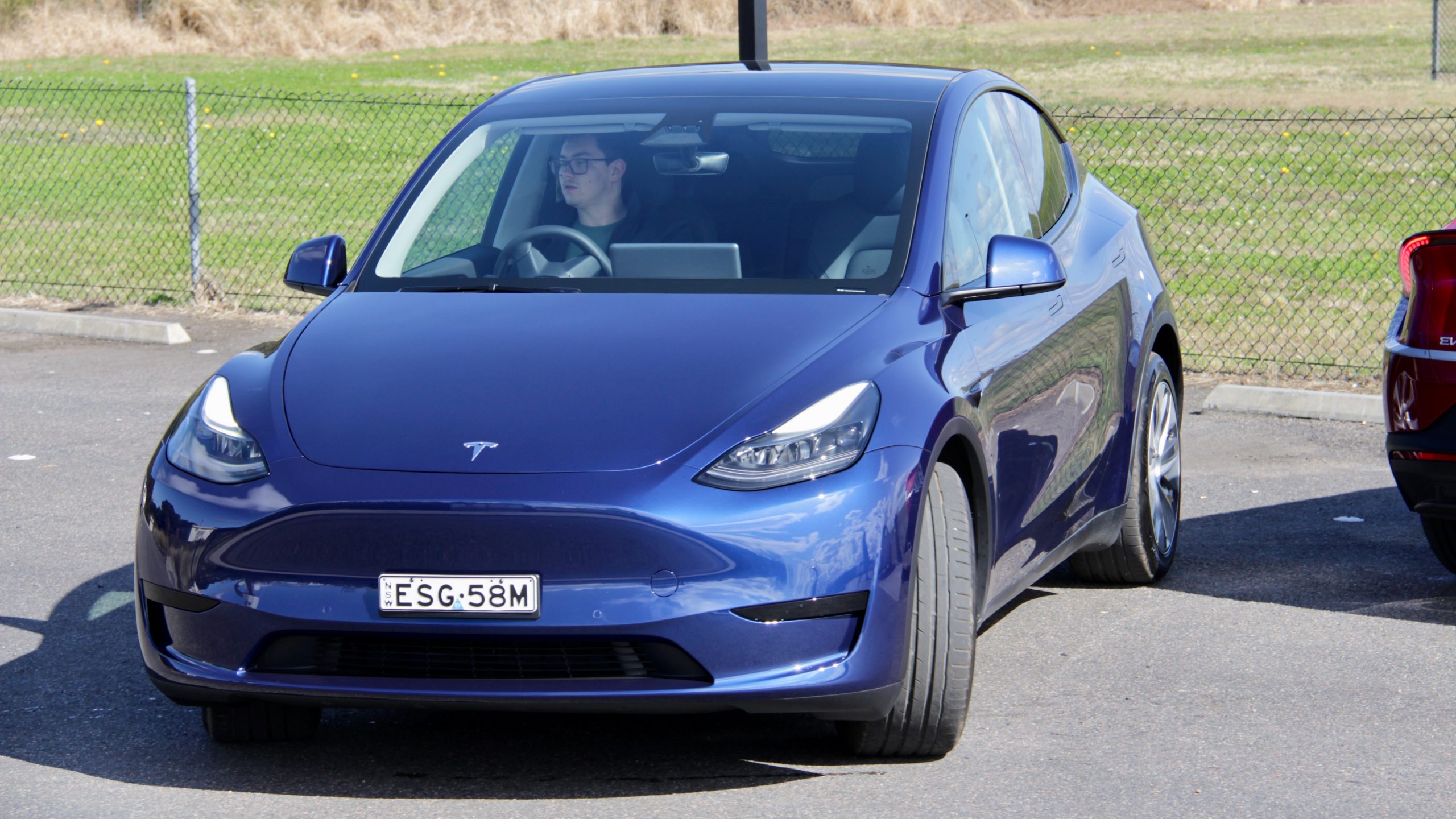
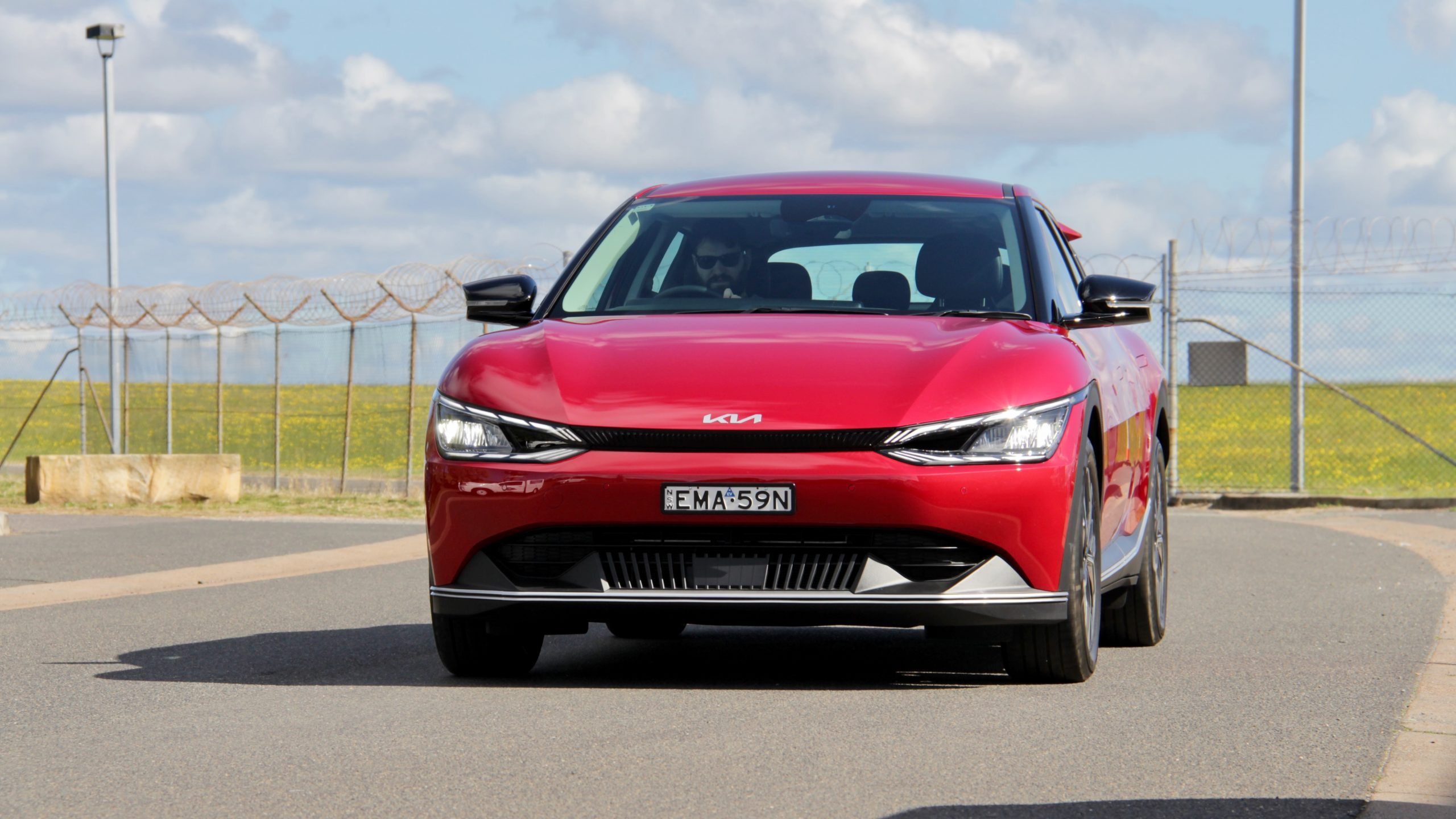
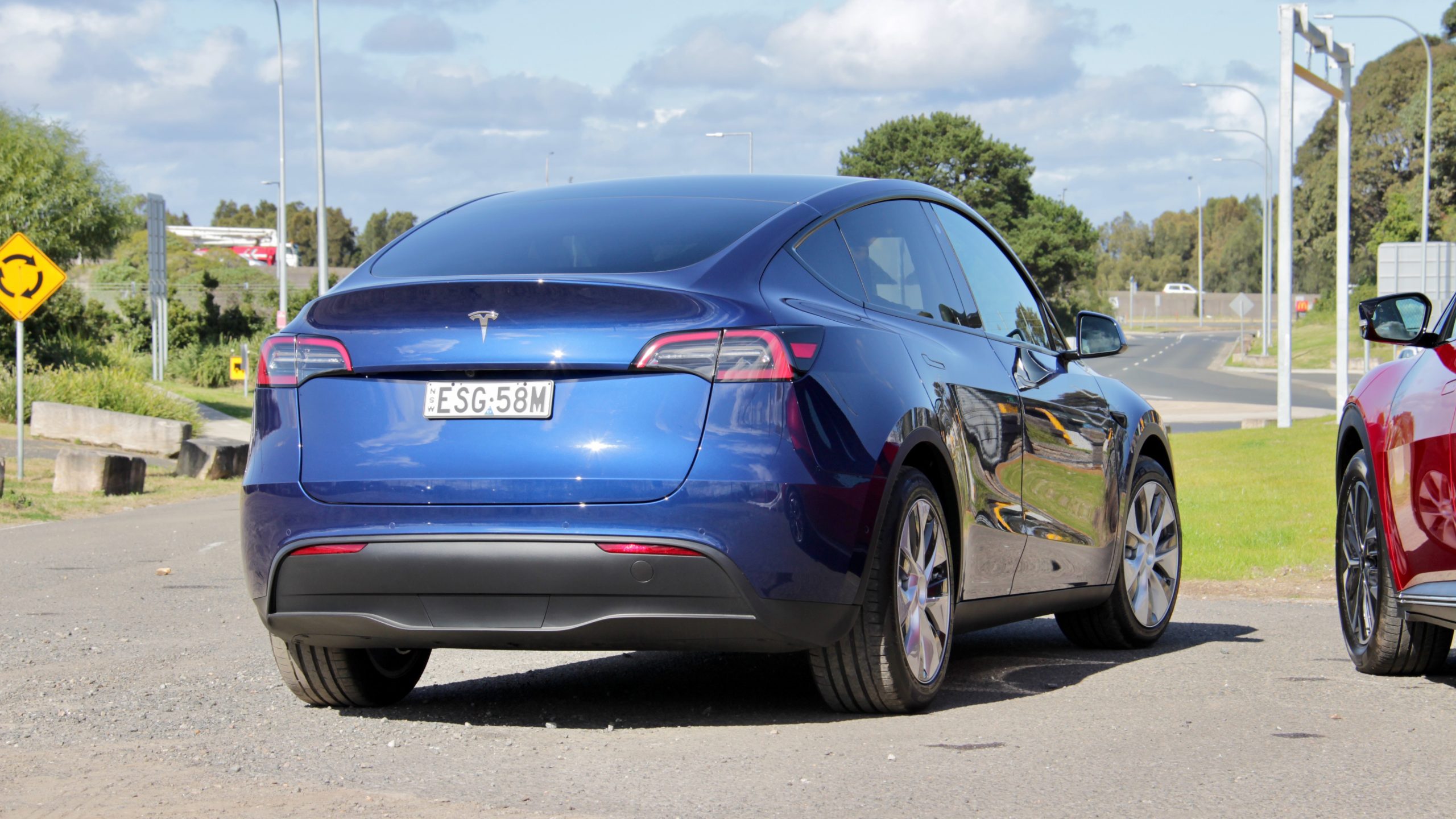
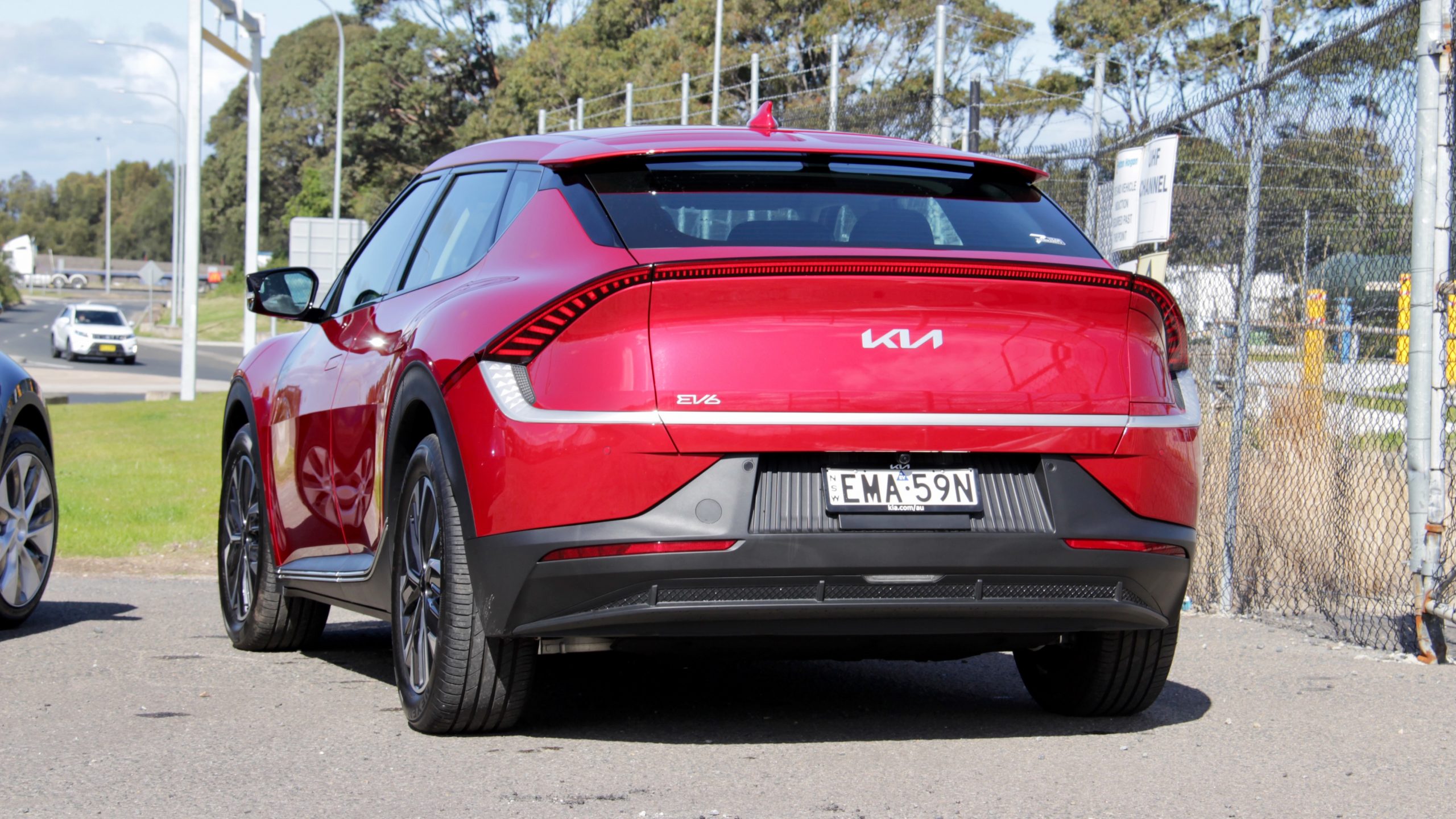
Unlike the Model Y, the EV6 has selectable driving modes – eco, normal and sport – but it also has selectable regenerative braking through its paddle shifters. On level zero, there’s no braking at all, but in level four – or ‘I-Pedal’, as Kia calls it – it can be driven without touching the brakes as it’s very strong. The Tesla has ‘chill’ and ‘normal’ driving modes that change the throttle response – plus, its steering has three modes – but its one-setting regenerative braking isn’t able to be changed.
Performance & Range Winner: 2022 Tesla Model Y
Ride & Handling:
Both the EV6 and Model Y are nice to drive, though thanks to Kia’s local tuning program, the EV6 shines higher than the Model Y in a variety of driving conditions. There’s nothing wrong with the way that the Model Y drives, but it feels noticeably heavier than the EV6 and despite having the same sized wheels, even smaller bumps are felt much more in the cabin. Bigger hits can be terse. In comparison, the EV6 feels light behind the wheel and its ride quality is superb – it’s firm, but its body control deals with everything very quickly. It’s a very impressive effort from Kia – especially compared with the soggy and underdamped Hyundai Ioniq 5 that uses the same platform.
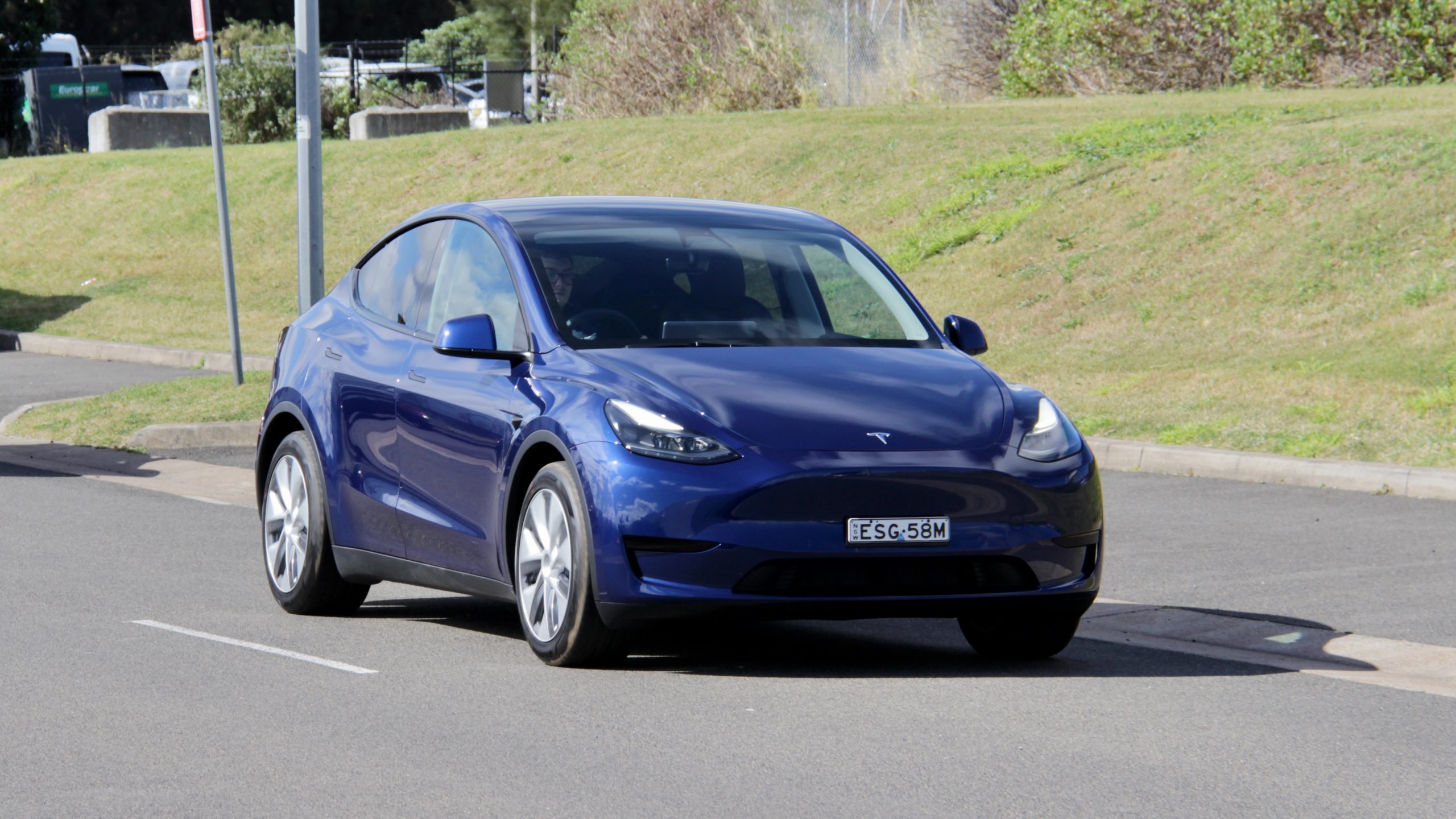
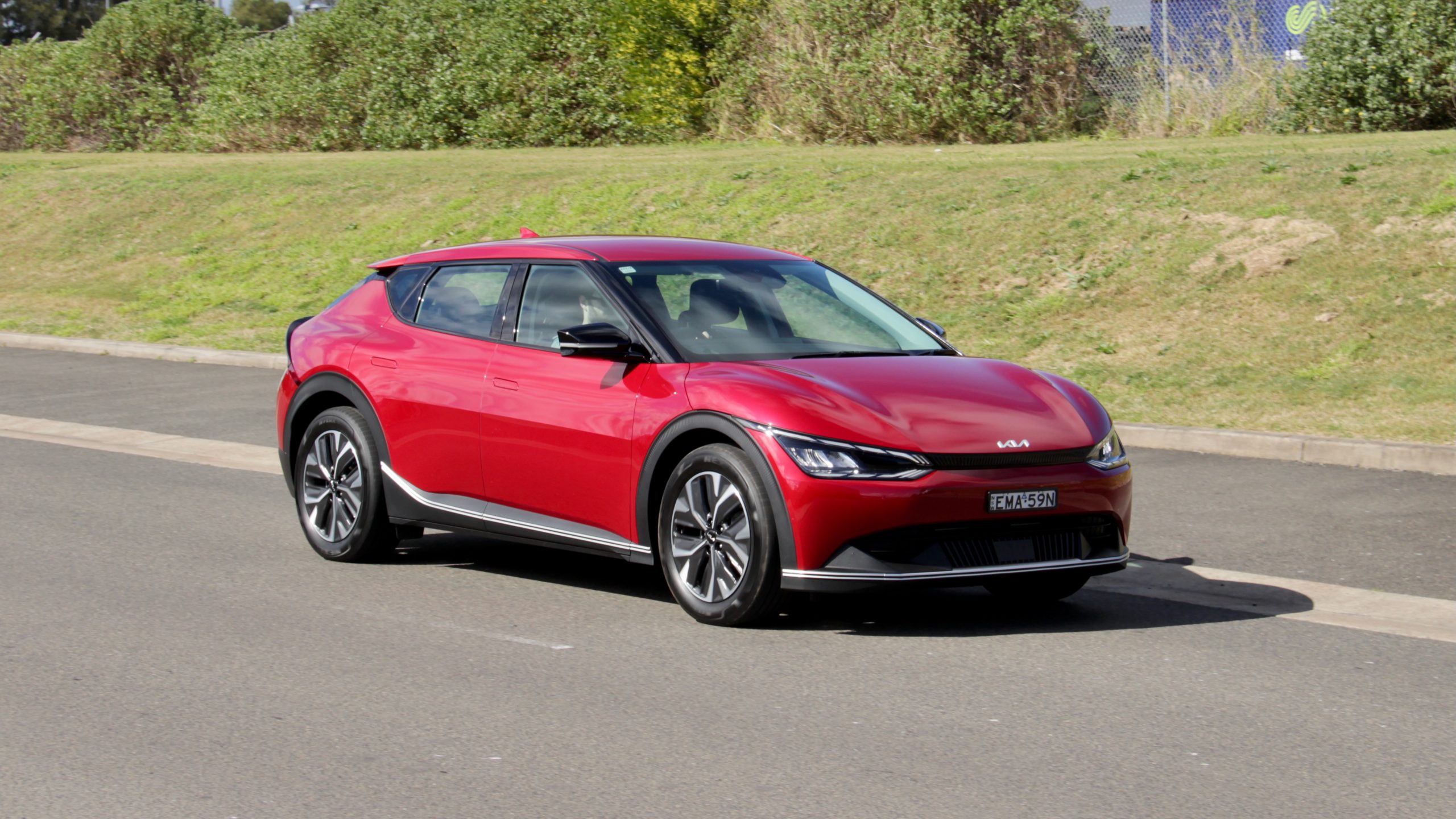
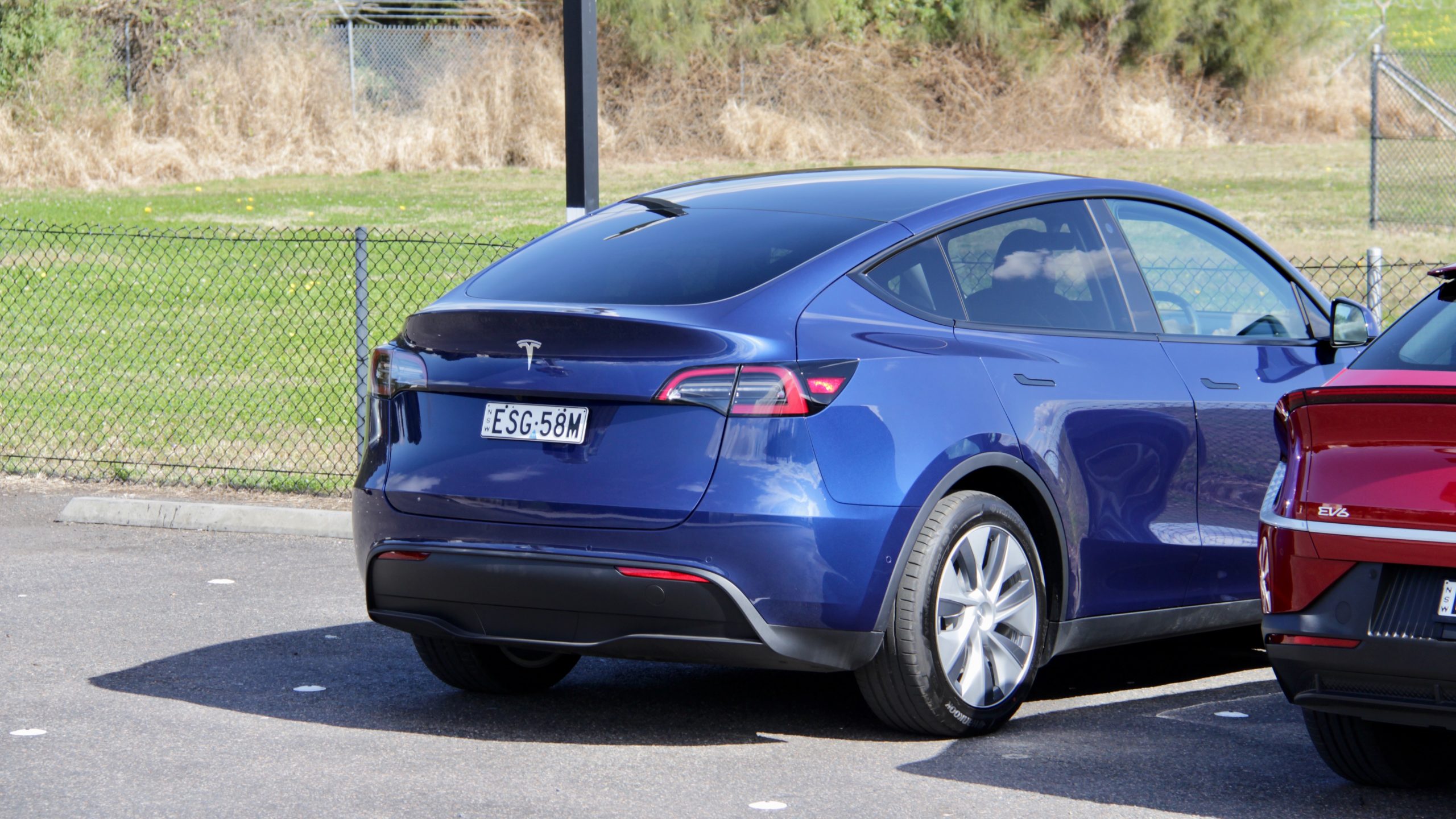
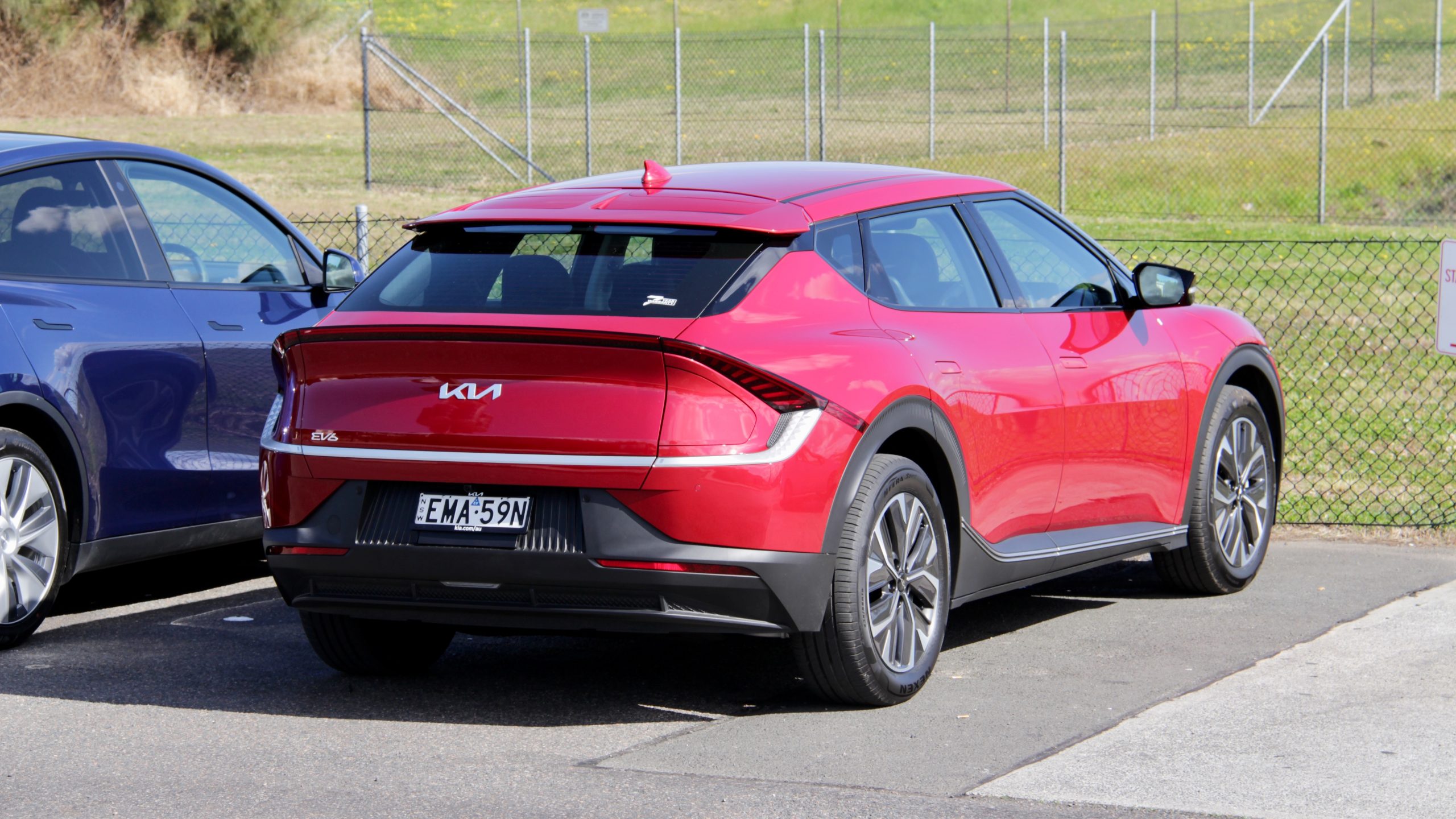
The rest of the driving experiences are largely positive – both cars offer quick but largely feel-free steering, the Tesla’s visibility is noticeably better than the Kia’s thanks to its larger windows and both have pleasantly low road noise levels. One big difference between the EV6 and Model Y is their driver information systems – the Kia has a pair of digital dials located traditionally ahead of the driver, but the Tesla has only one – centrally-mounted – screen, and looking down and to the left just to see what speed you’re travelling at can be frustrating. We think the Model Y (and its Model 3 sibling) both desperately need a heads-up display, especially in speed camera-ridden Australia.
Ride & Handling Winner: 2022 Kia EV6
Interior & Practicality:
From the outset, both the 2022 Tesla Model Y and 2022 Kia EV6 Air have modern, intuitive and good quality interiors that offer a lot for families – and even environmentalists with their recycled and meat-free materials. Both cabins are high-tech as well, as you’d expect from an electric car in 2022, but one cabin offers a definite sporting look, while the other goes for outright minimalism. Unlike a lot of cars these days, both the Model Y and EV6 have character, and we love that.
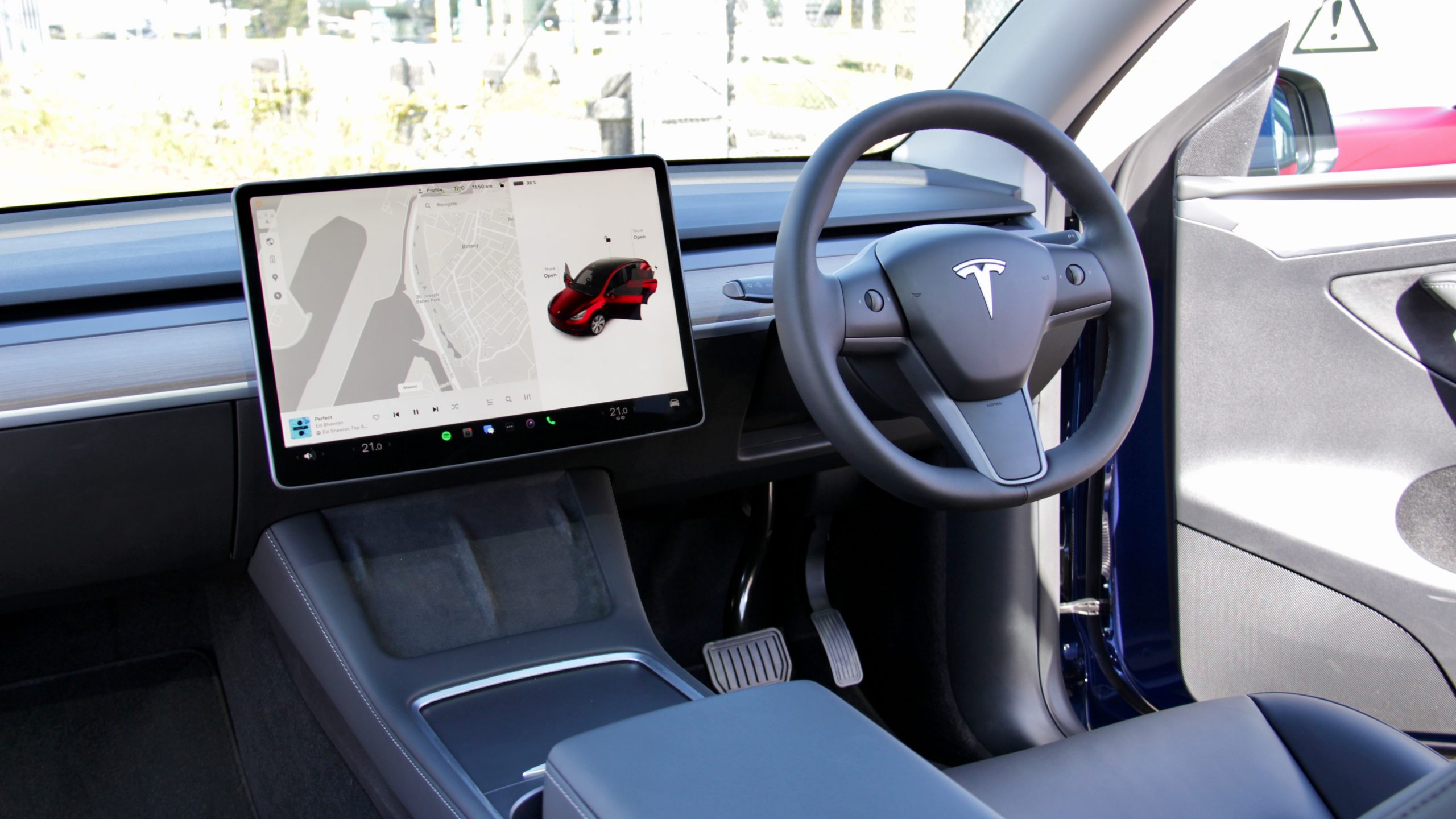
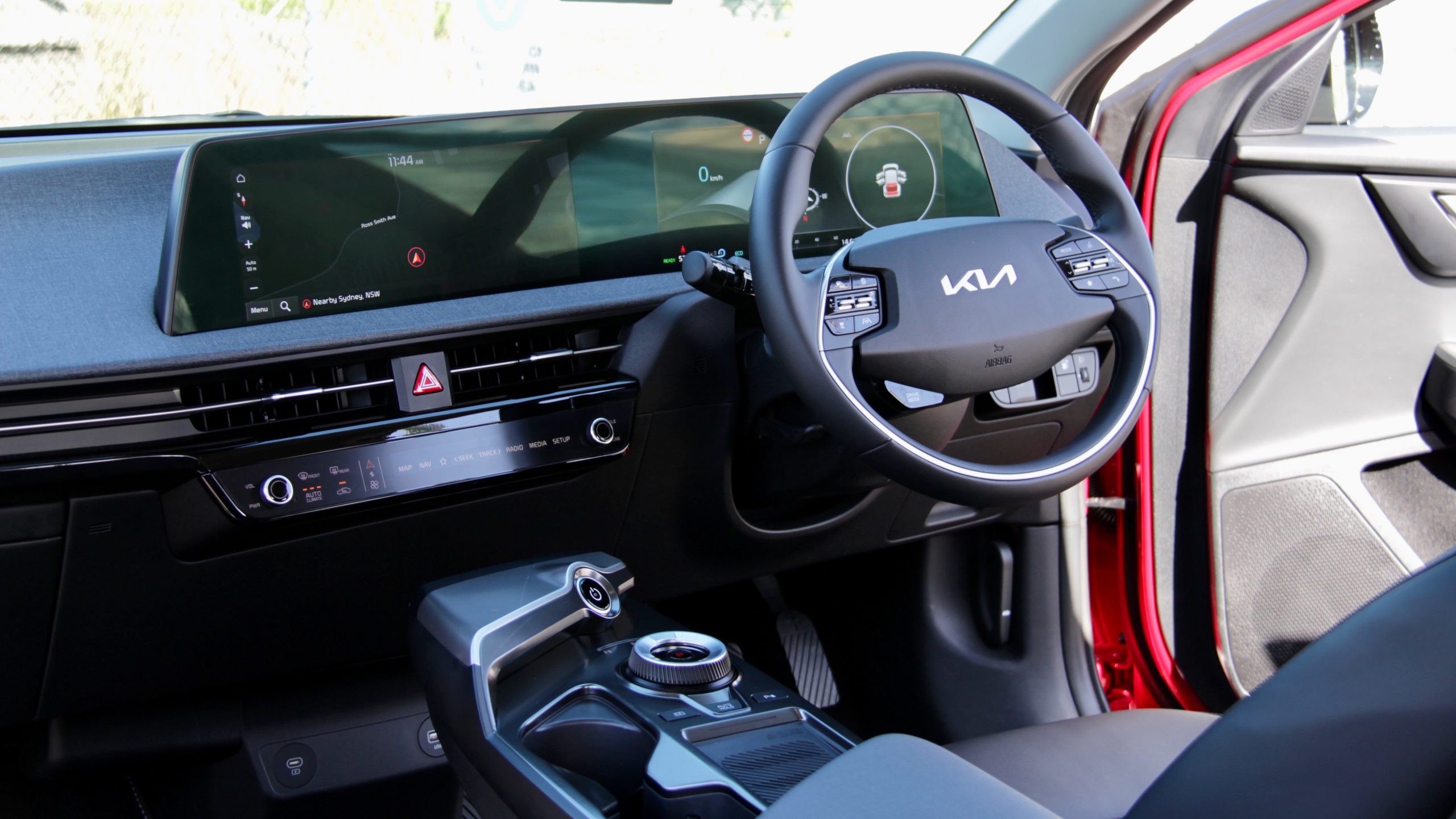
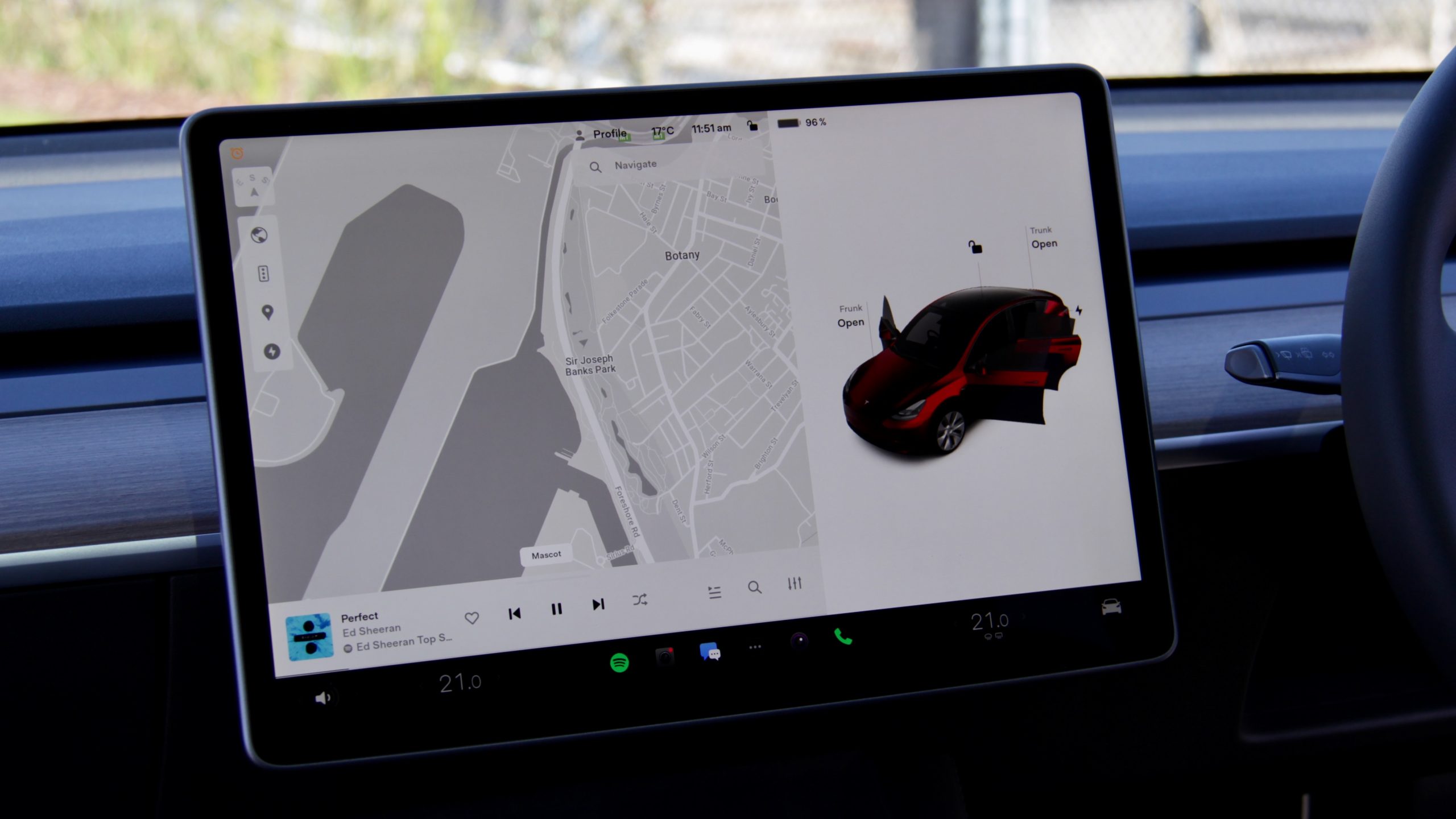
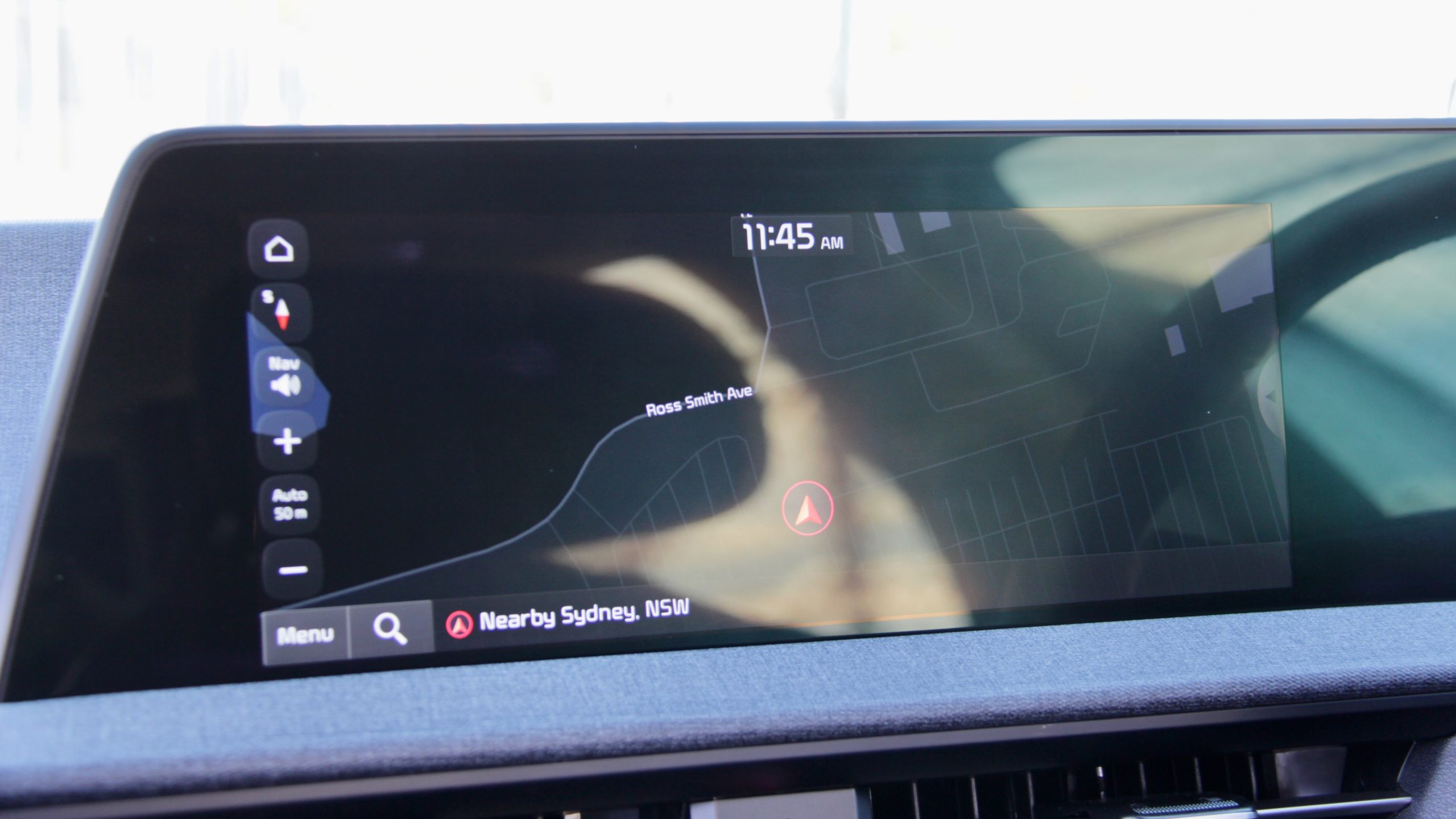
Both cabins are well screwed together, with good quality materials – the Tesla’s soft touch materials stretch further than the EV6’s though, and its cabin feels slightly more upmarket compared with the entry-level EV6 Air. Both cars have seats that are comfortable, though only the Model Y offers electric adjustment (with driver’s memory) for the front seats. It must be said as well, that the Tesla’s cabin is noticeably airier thanks to its larger windows and standard glass roof – there’s nothing wrong with the EV6’s sporty cabin, but it feels smaller than the Model Y.
Centrepiece of both cabins are large touchscreens and particularly in the case of the Model Y, they control pretty much all of the car’s functions. The Tesla’s huge 15-inch touchscreen is the sole screen in the entire car – it houses all the media, navigation, settings and even safety and speed limit information. It’s very much like an iPad mounted on the dashboard in both screen quality and intuitiveness, though it does take time to get used to, so try to learn the system before taking a drive. It also has a pumping 15-speaker sound system, which far outclasses even the Meridian system that’s used in higher EV6 models. It may not matter to you, but unlike the EV6, the Model Y doesn’t have an AM radio – which in certain parts of Australia and in emergency situations can be a lifeline
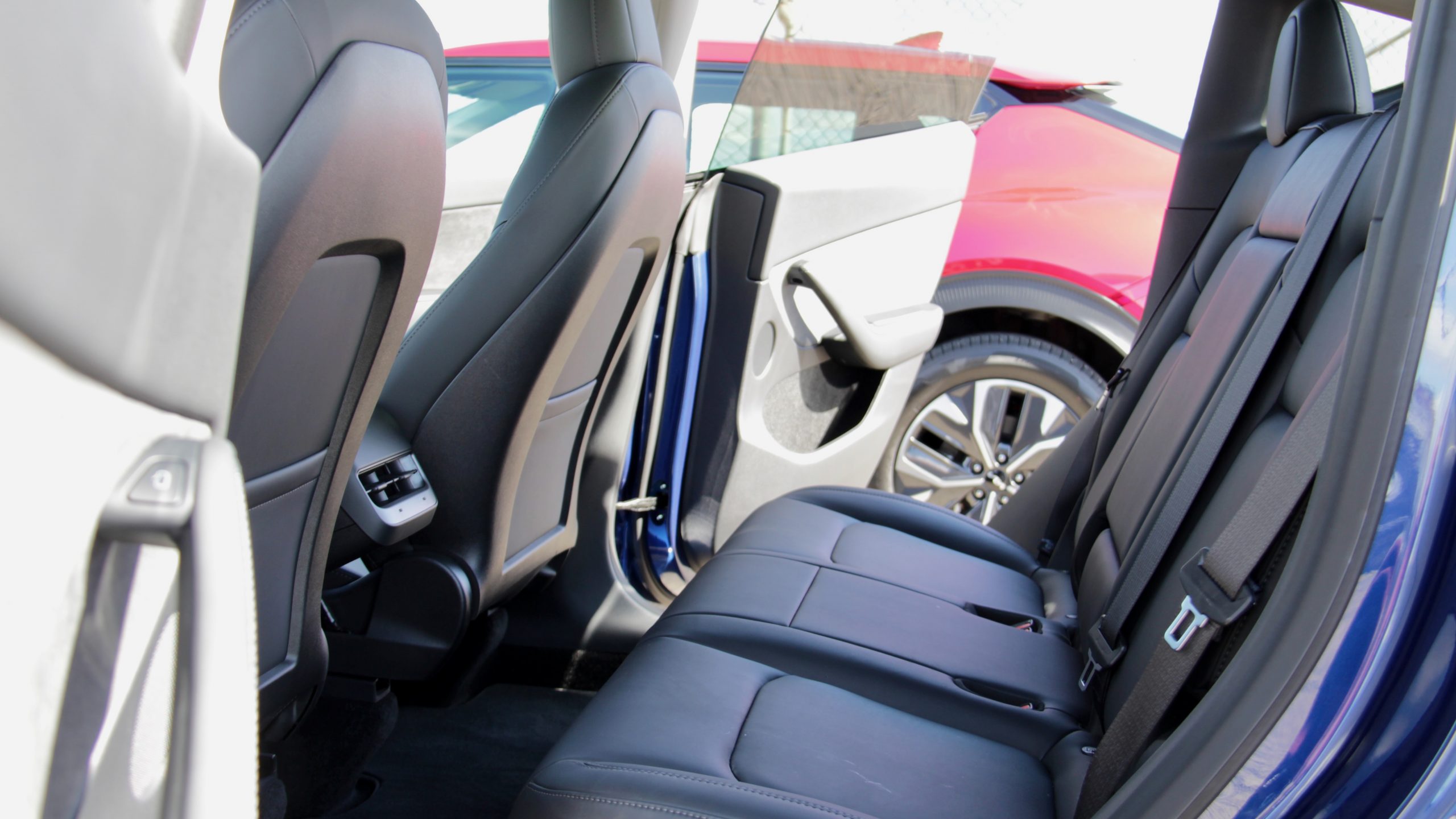
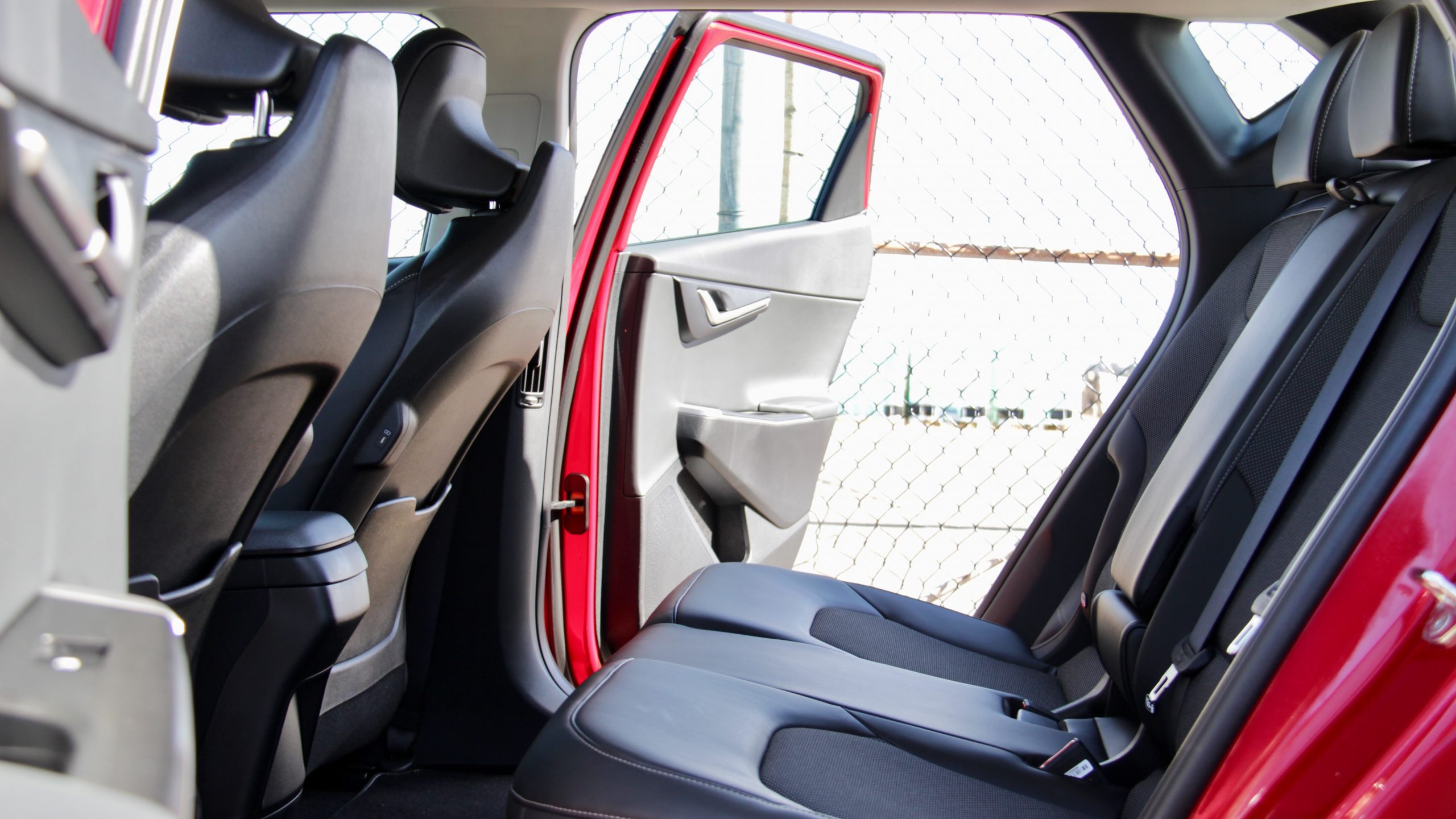
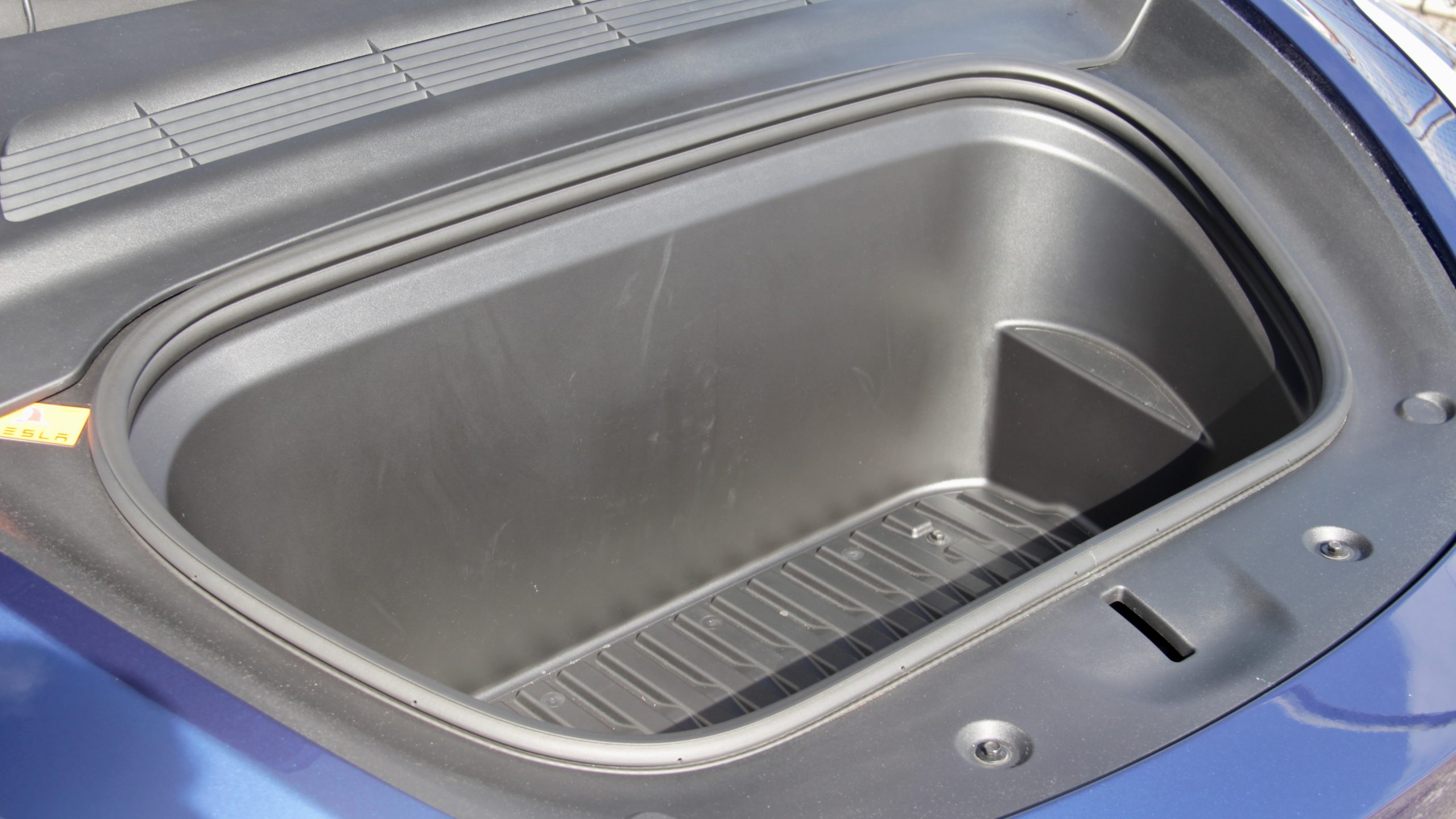
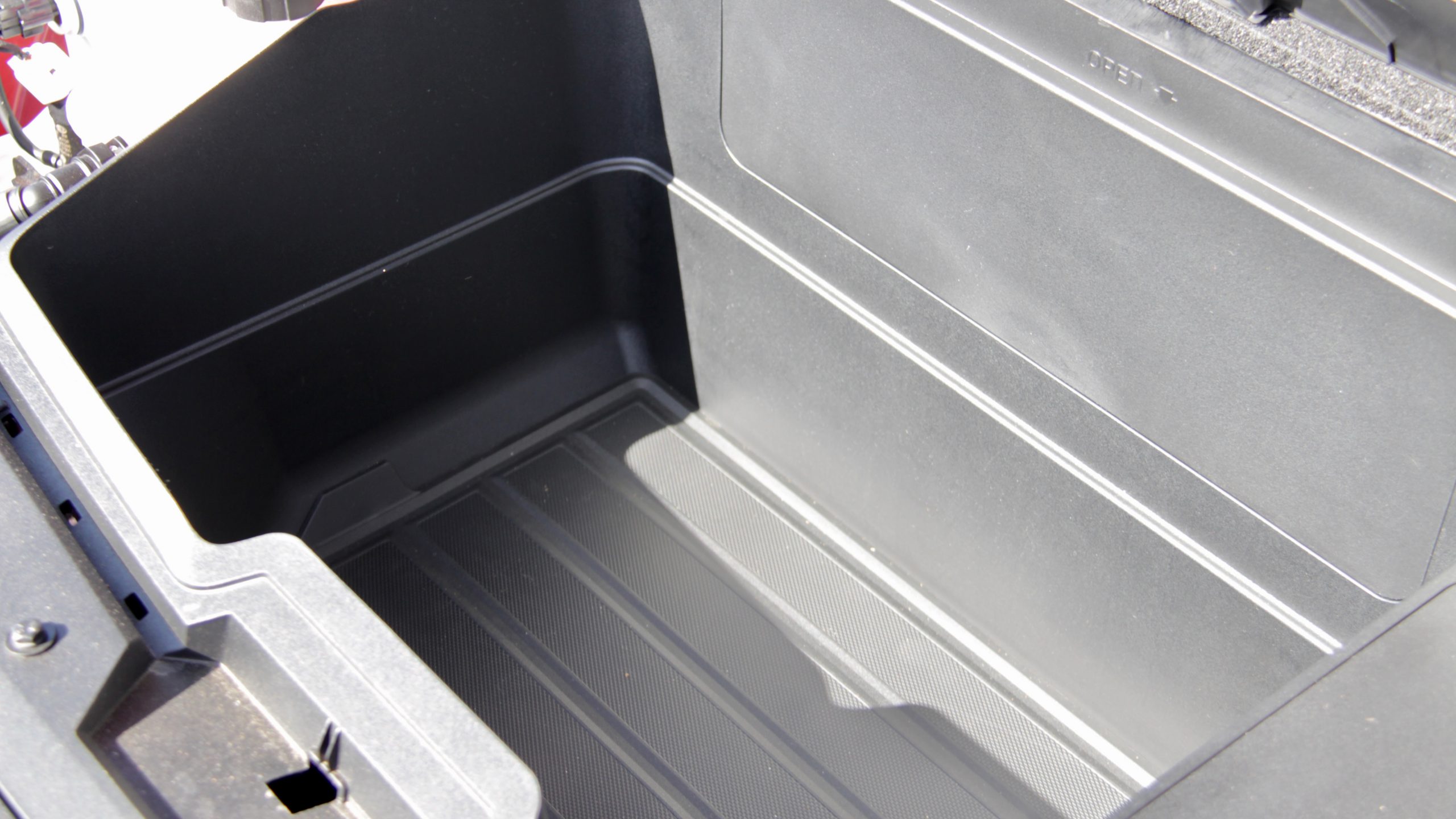
In terms of practicality, both cabins are well featured with large gloveboxes, door pockets and centre bins. Ironically against its futuristic touchscreen, the Model Y’s cabin layout is more conventional than the EV6’s, but still quite minimalist – the Kia’s ‘bridge’ centre console is very cool to look at and it has a huge amount of storage, and even three USB ports. The Tesla has two bins instead of an open tray, and they are very deep as well.
The rear seat of the Model Y and EV6 are actually quite similar in both knee- and headroom – the Kia has a touch more legroom, but the Tesla has more headroom despite its standard panoramic glass roof. Crucially, both have more than ample room for even taller folks, while they both have rear air vents, two USB charging ports and centre arm rests with cupholders – the Tesla also has heated rear seats that are controlled through the front centre screen.
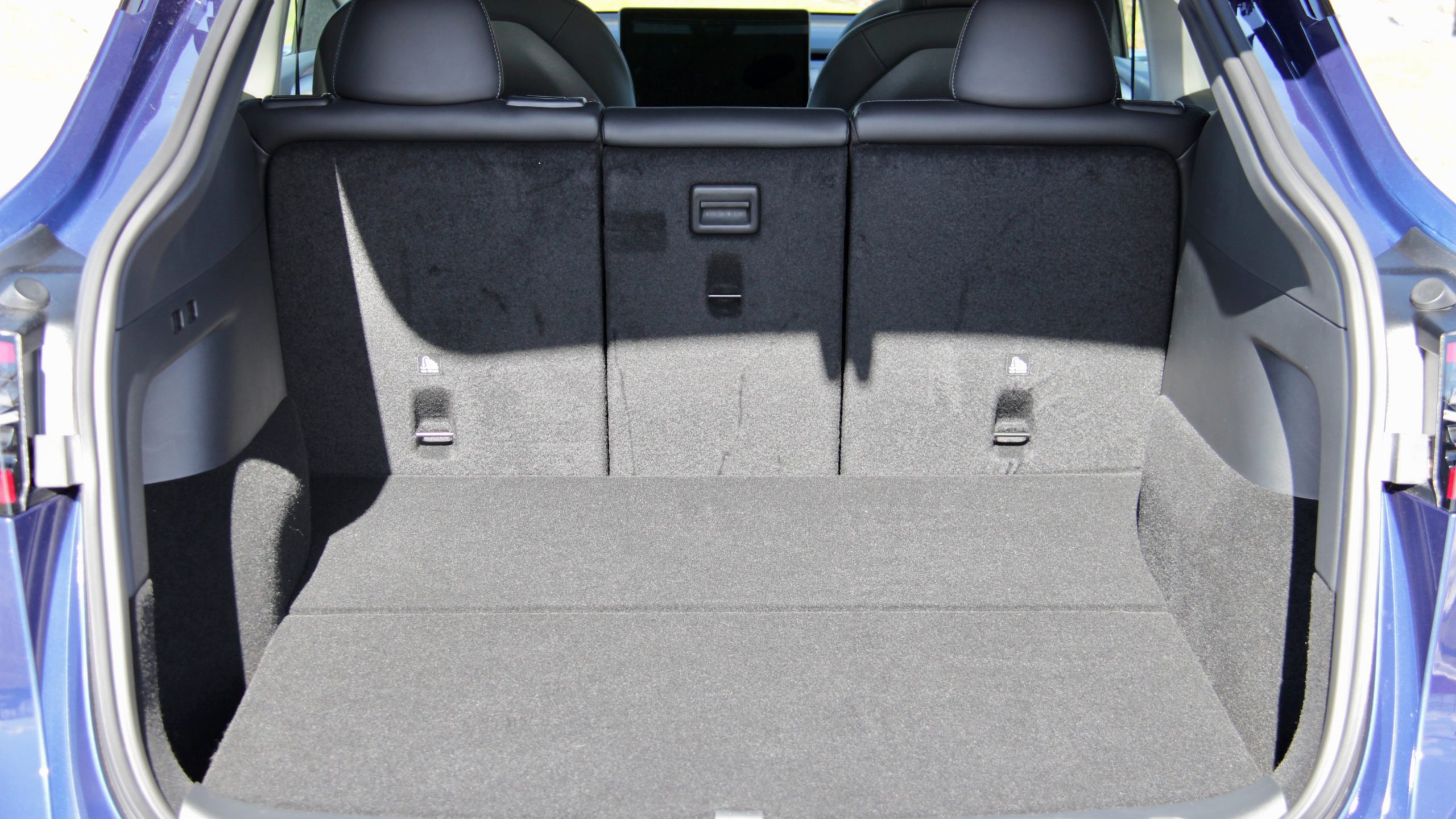
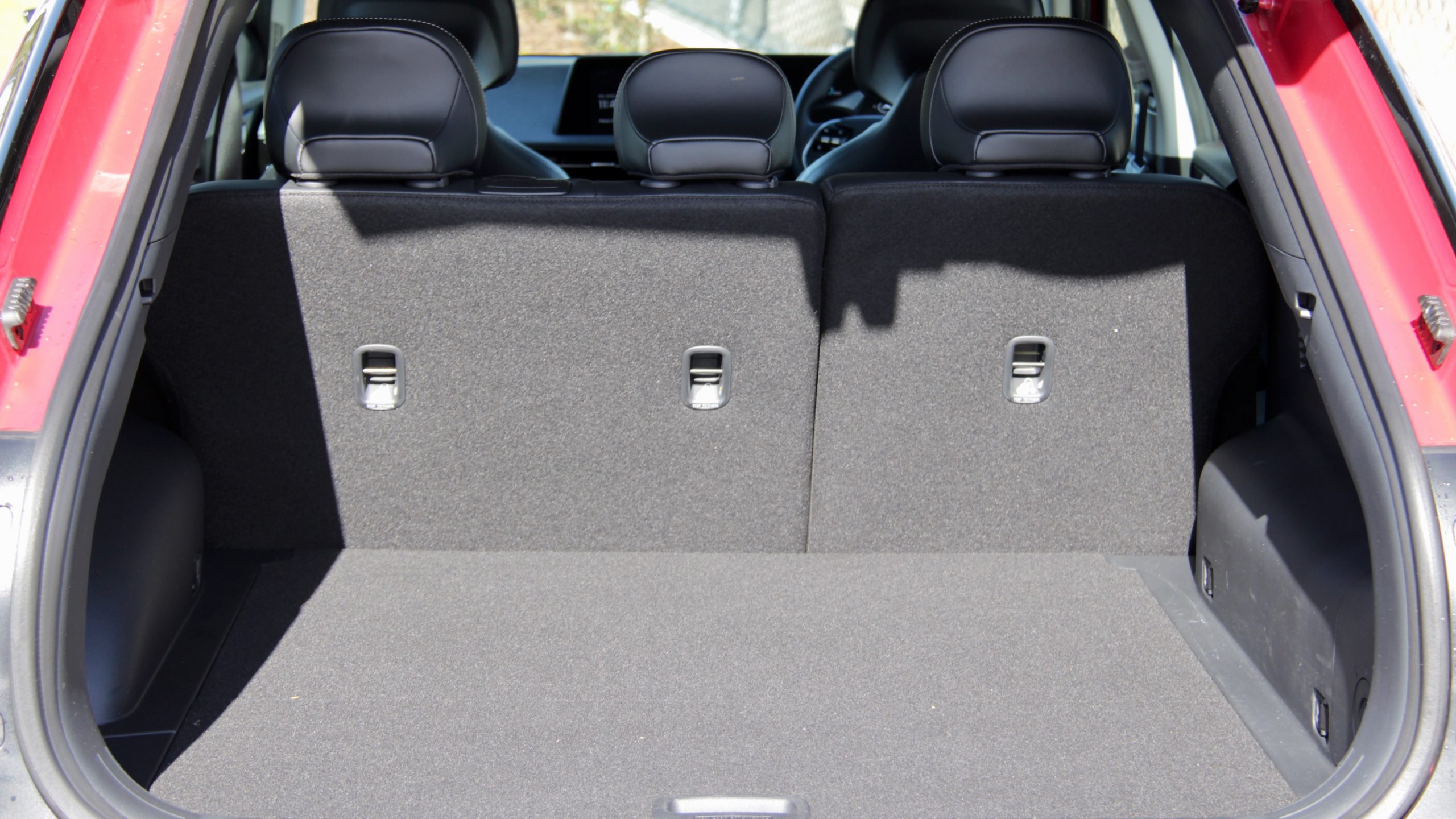
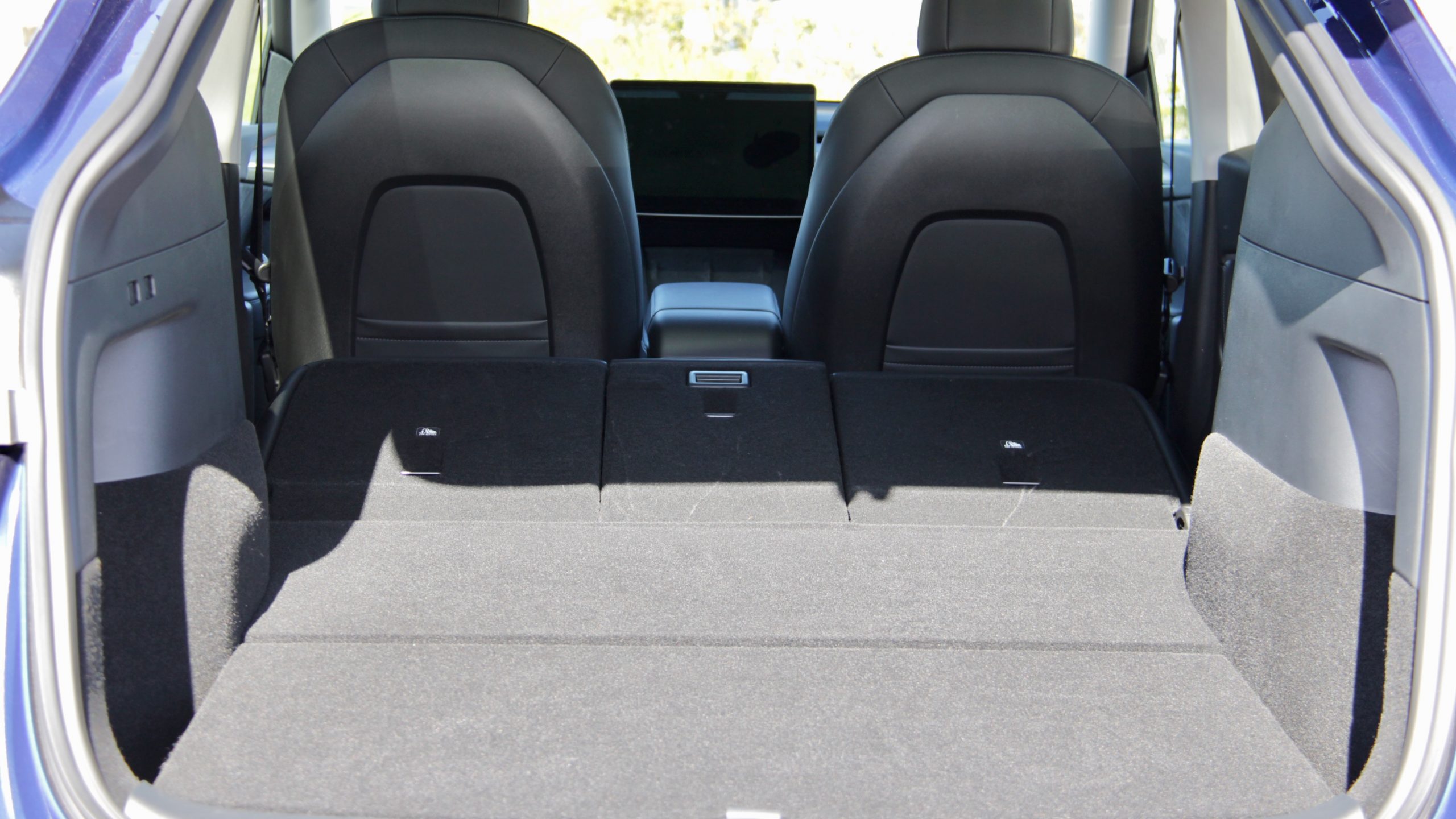
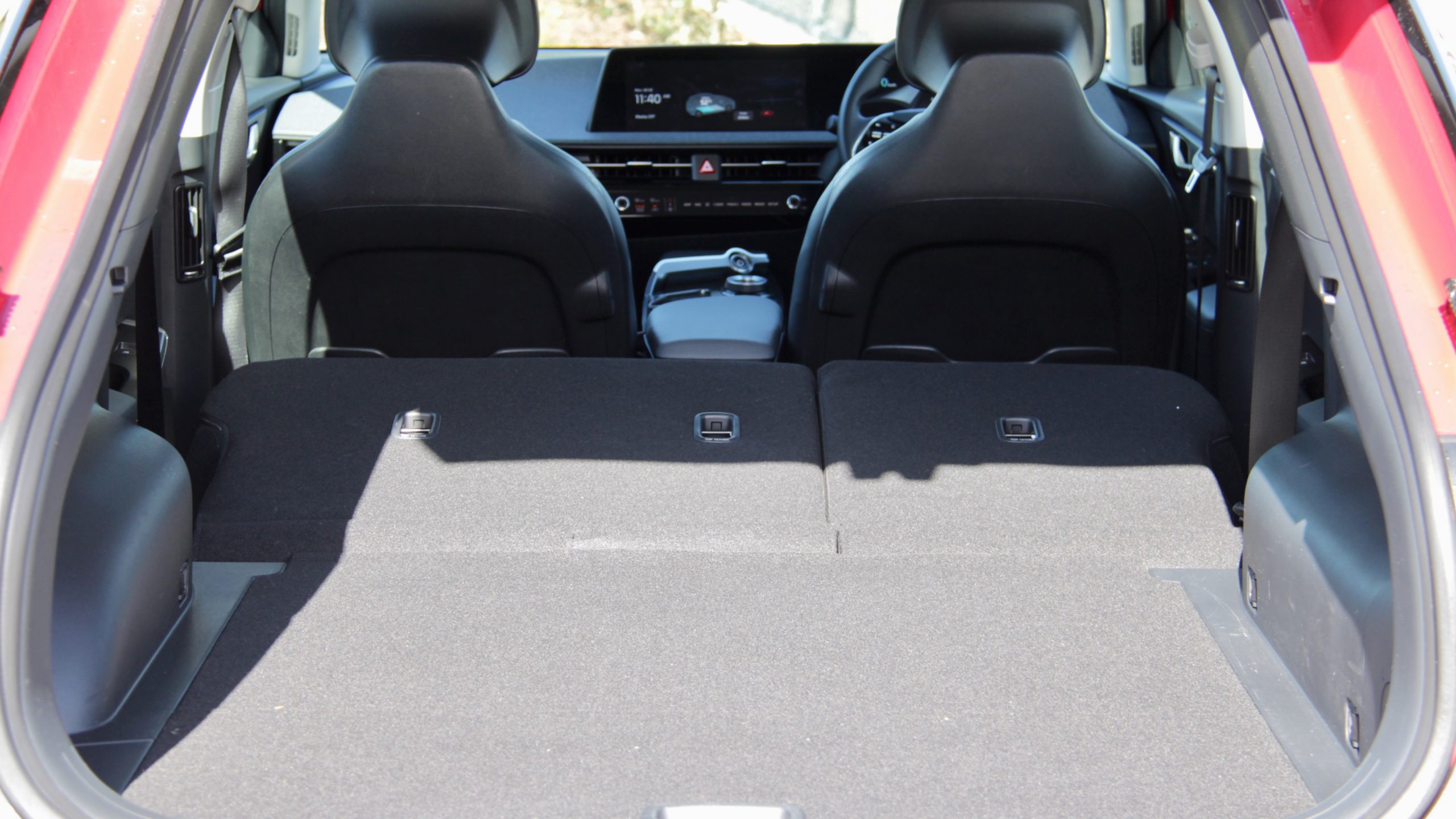
The EV6 offers a healthy 490-litres of boot-space, with 1,270L on offer with the seats folded – but the Model Y is larger – Tesla doesn’t quote an equivalent VDA (to belt line) boot-space figure, instead it measures 895-litres of boot-space to the ceiling (including the huge underfloor section) with the seats erect and 2,158L to the ceiling with the seats folded. Suffice to say, the difference isn’t as large as the difference in numbers would suggest, but the Model Y definitely has an appreciably bigger boot. Its frunk also has a very handy 119L of space, which is more than double that of the Kia. But both have flat floors, generous under floor and side storage, as well as buttons to press to lower the rear seat. Neither car has a spare wheel though, which is disappointing.
Interior & Practicality Winner: Tesla Model Y
Service & Warranty:
While the EV6 has a seven-year/unlimited warranty, Tesla has a lesser four-year/80,000km equivalent. Both have eight years/160,000km of warranty for the battery. The Tesla conveniently doesn’t need regular servicing as it has over-the-air updates, but the Kia must be serviced once yearly/every 15,000km (which costs just $1,089 over five years/75,000km or $218 per service).
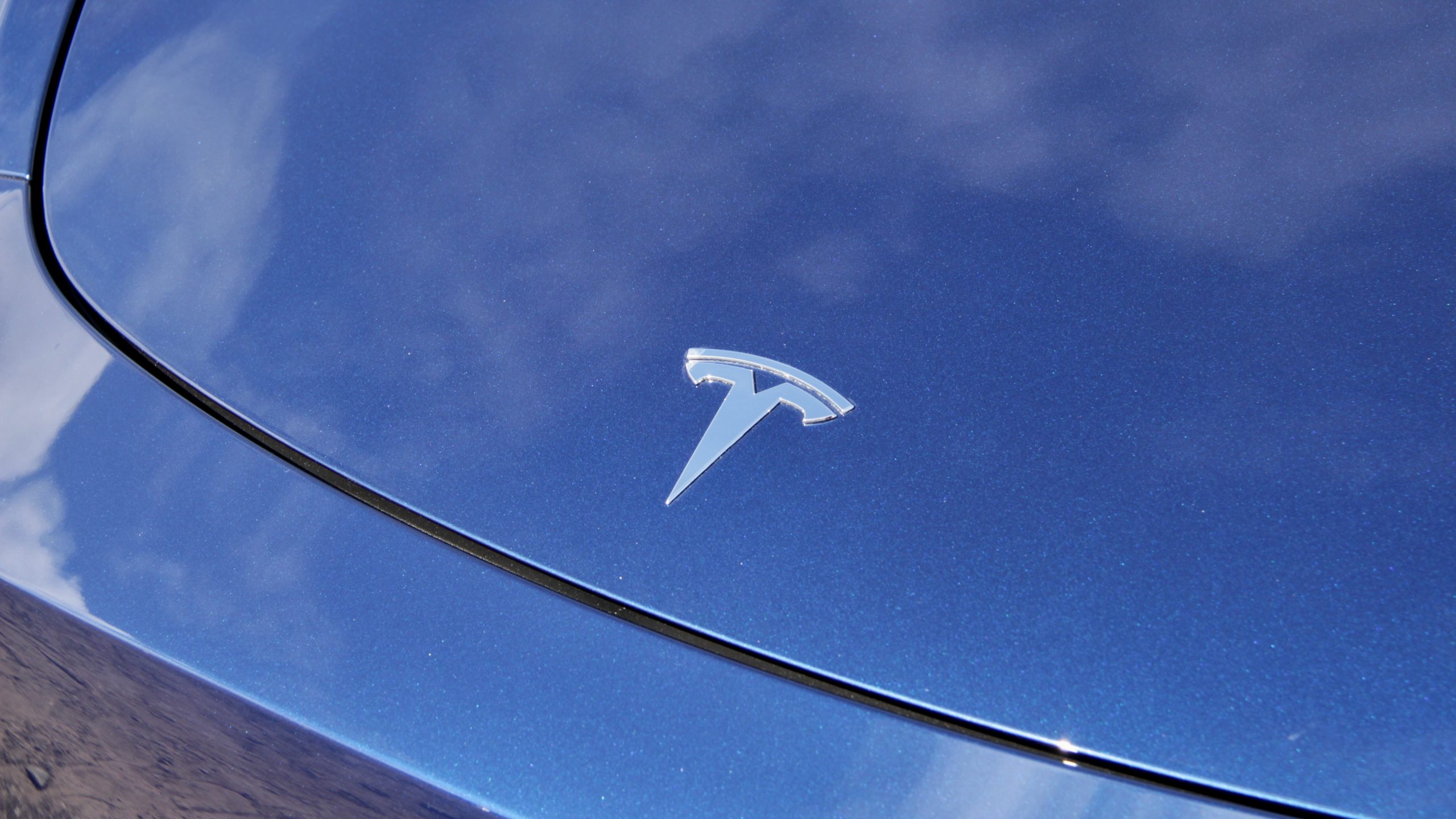
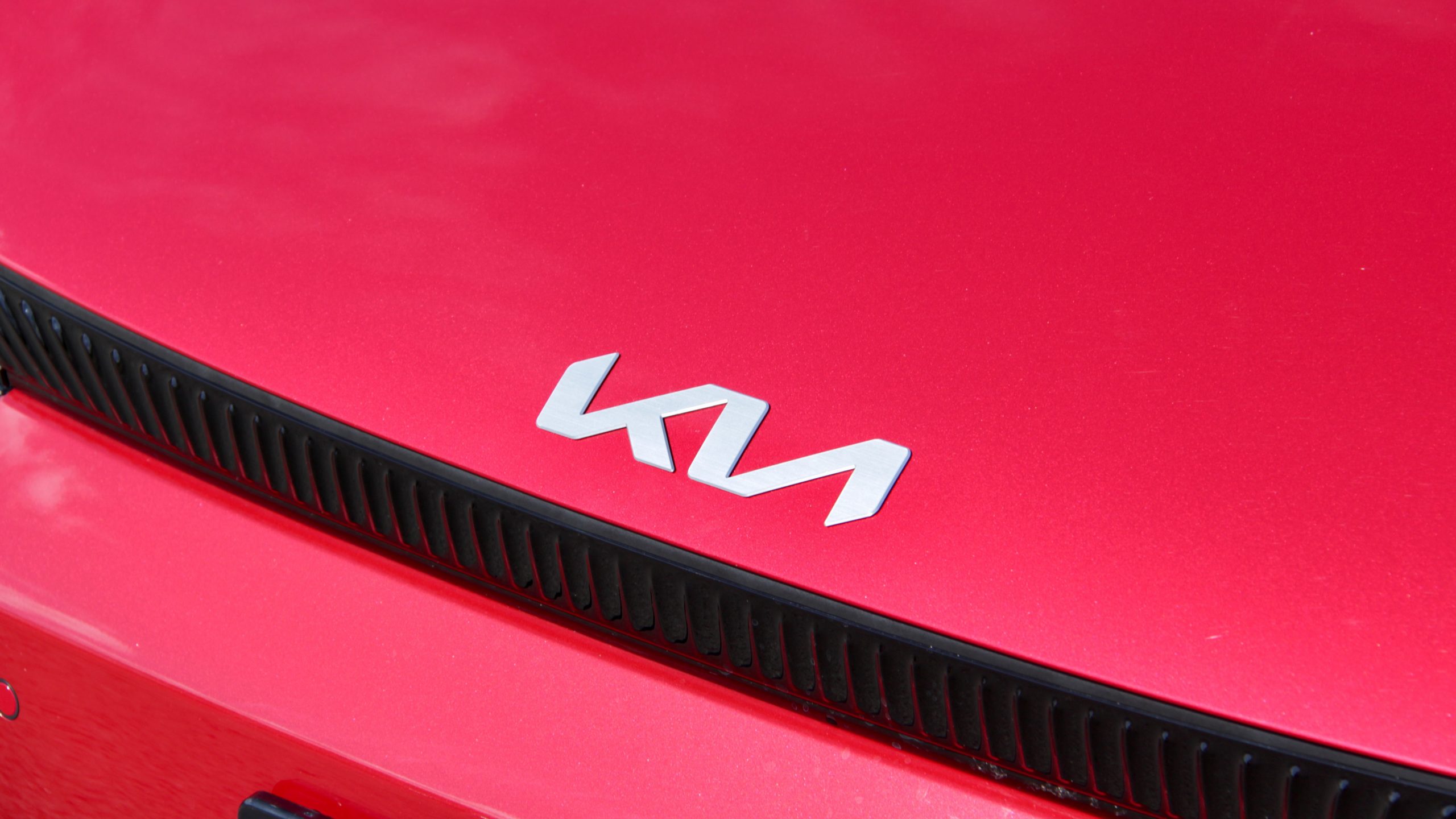
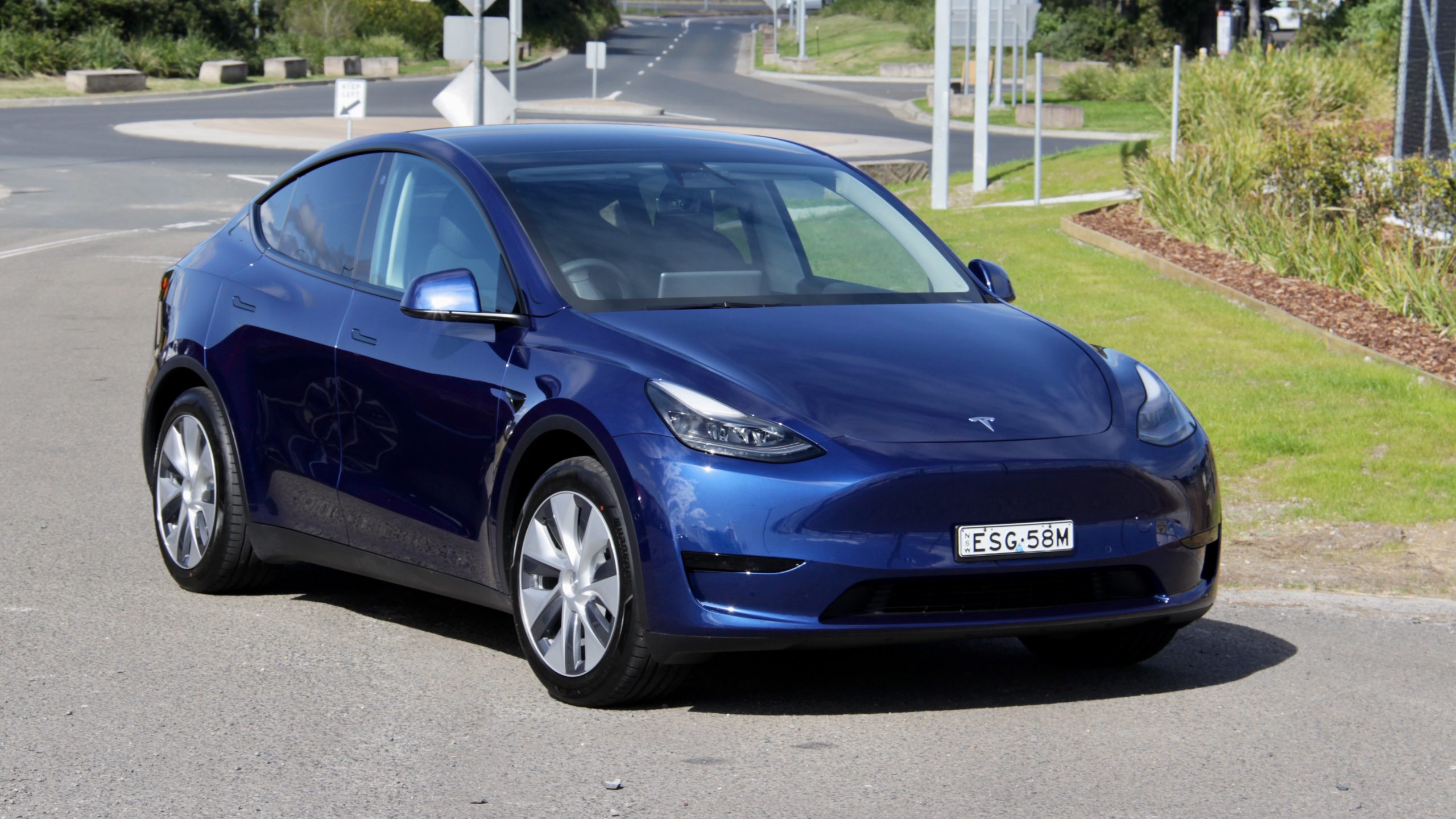
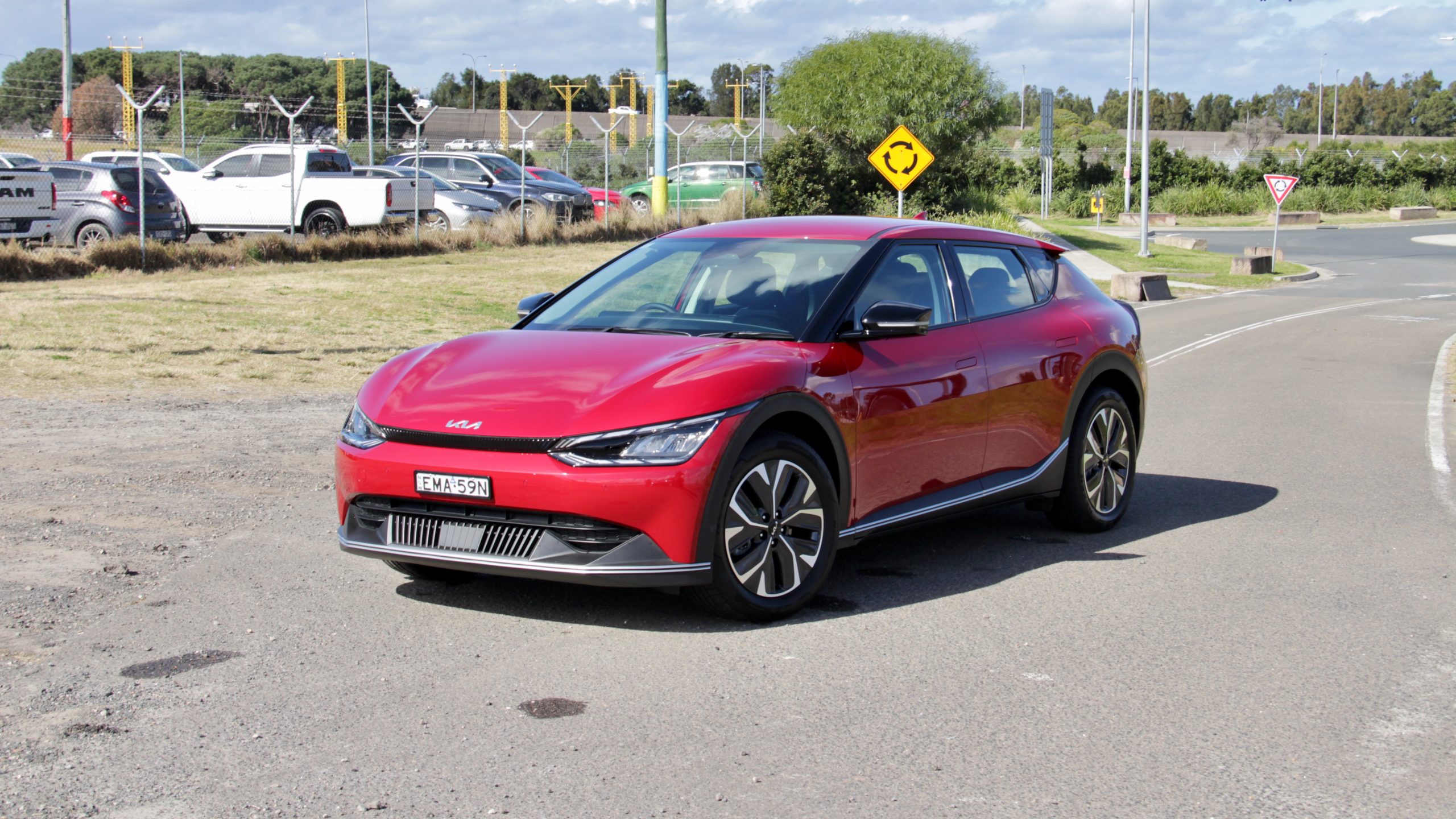
While you have to pay for regular servicing, the Kia’s warranty is almost double the length of the Tesla.
Service & Warranty Winner: Kia EV6 Air
Which is the winner: the 2022 Tesla Model Y RWD or 2022 Kia EV6?
Admittedly, this comparison was closer than we expected it to be. As you can tell from the individual sections, Kia is more than capable of putting up a fight to the biggest name in electric cars, and in some areas, wins compared to the Tesla. It offers more driving range, a better ride and handling balance and – despite charging for services – a superior warranty program. As we found out in our previous EV6 tests, it’s a great car – but it doesn’t hit the same high notes in the entry-level Air guide thanks to its stingy standard equipment list and sub-par value for money.
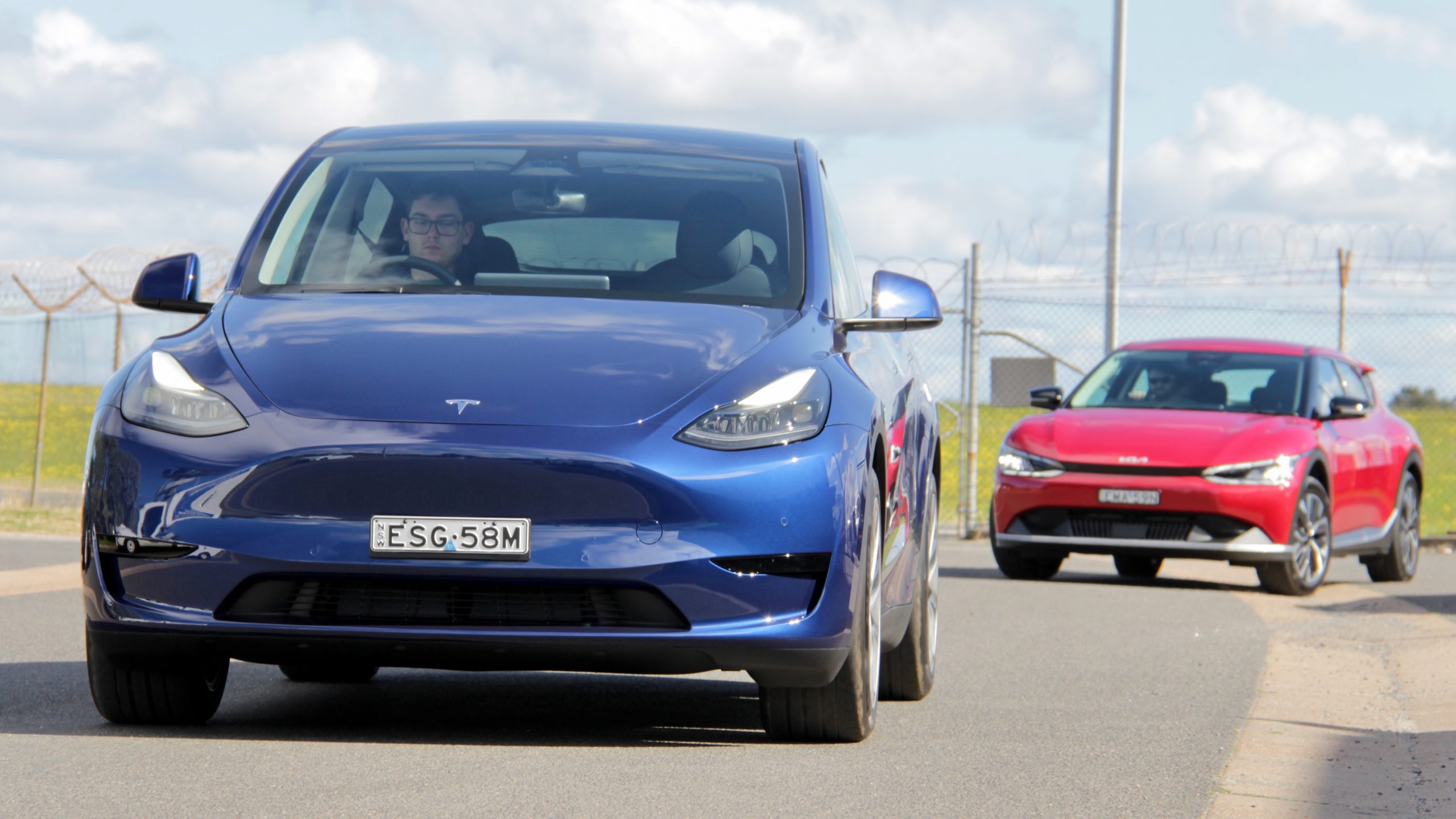
It’s these reasons – combined with a shorter waiting list plus the classier and roomier interior – that the 2022 Tesla Model Y wins this comparison. Yes, the Kia offers more range and drives better, as well as having almost double the warranty, but the Model Y is quicker and far better value for money. Crucially, we don’t think you can go wrong with either of these cars, but at the moment, the Model Y RWD is what we’d be buying if we wanted a mid-size electric SUV around the $80,000 mark.
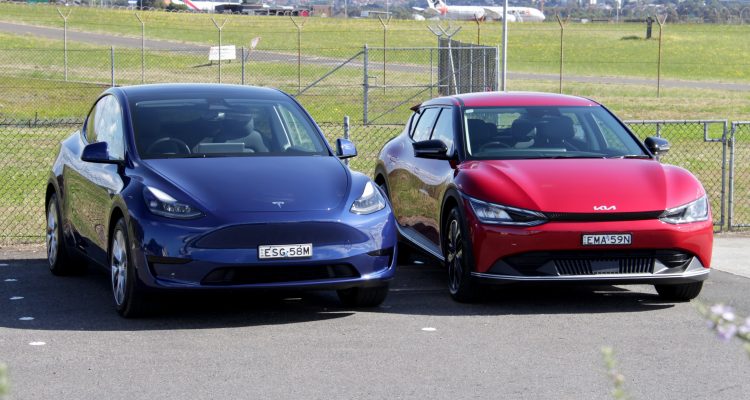
Leave a Reply